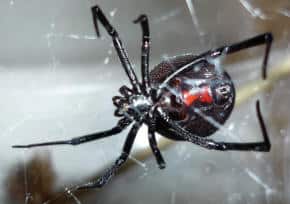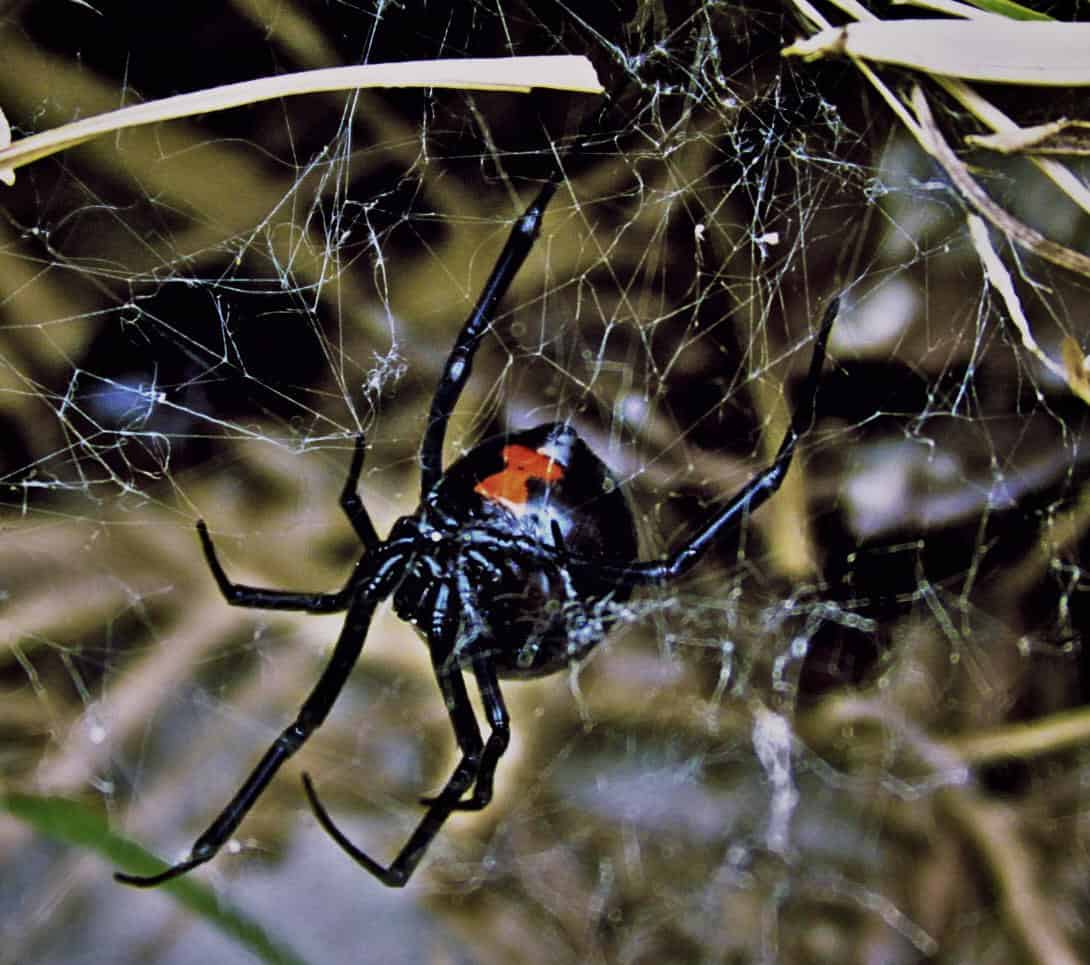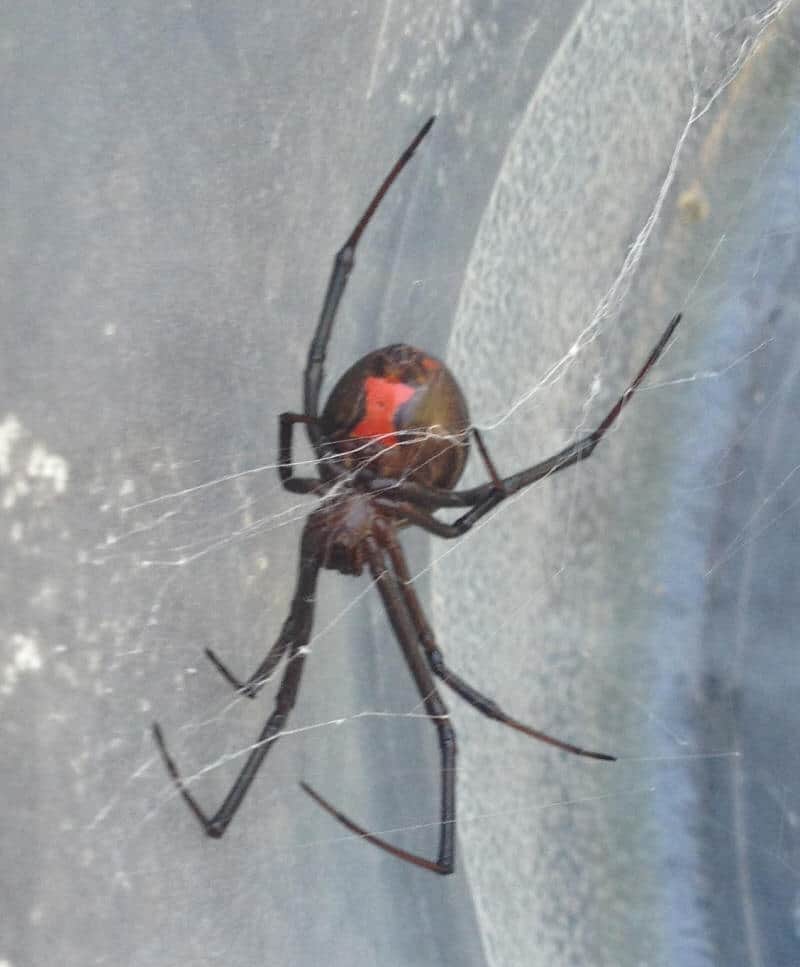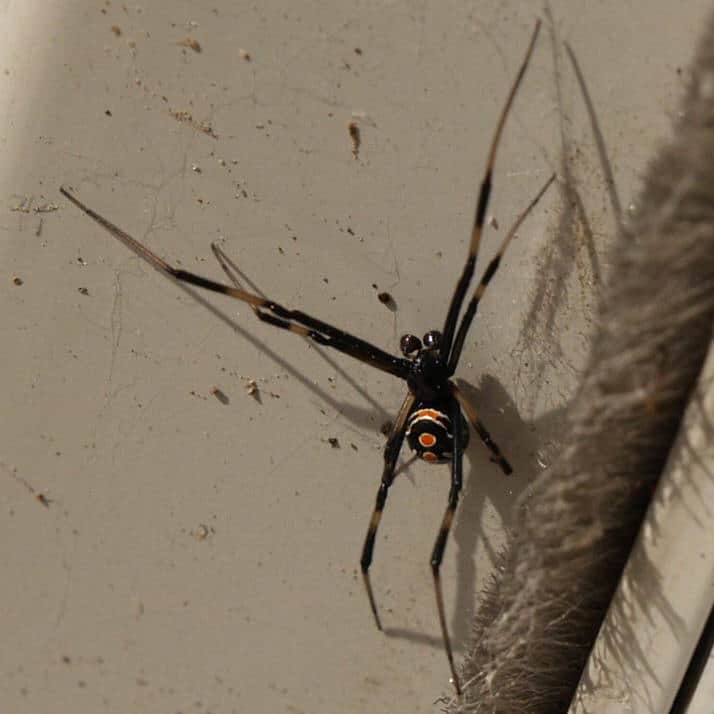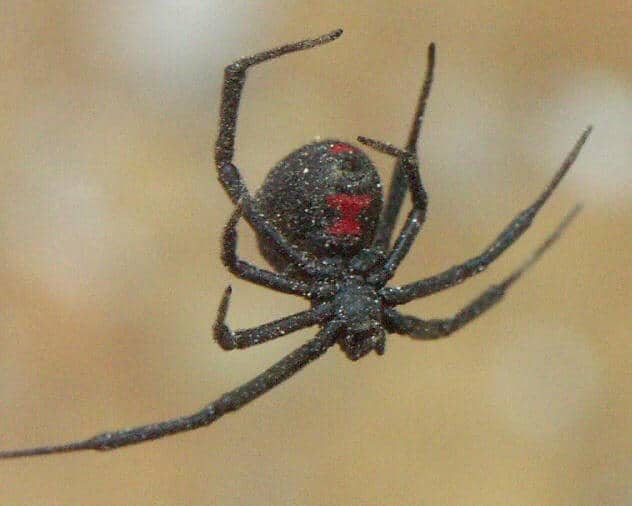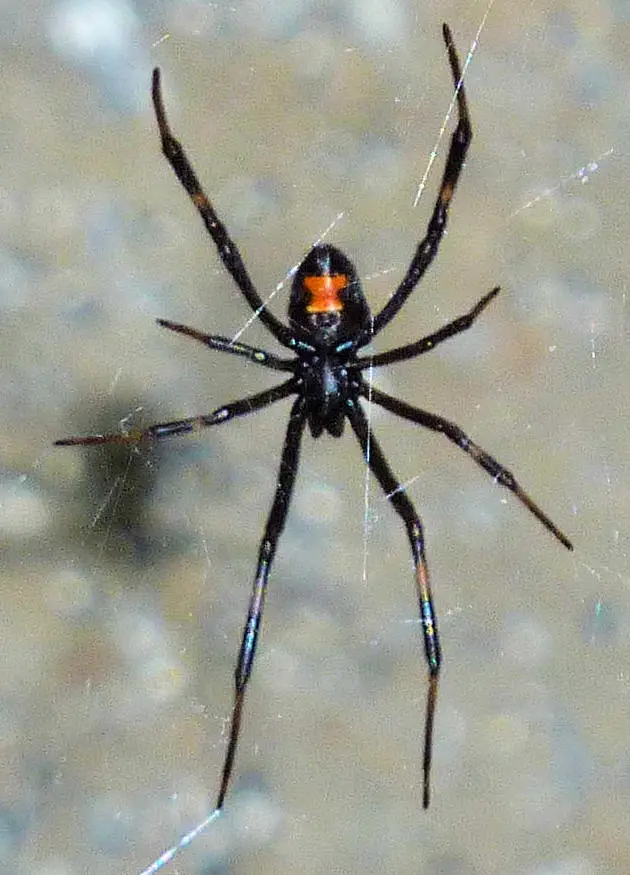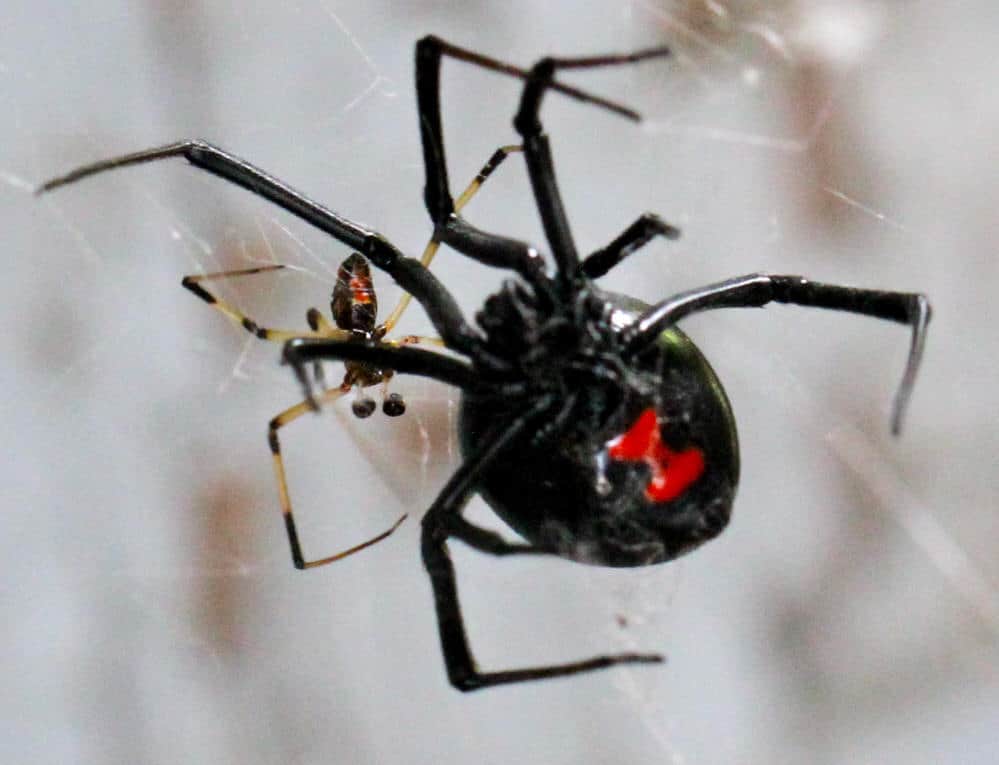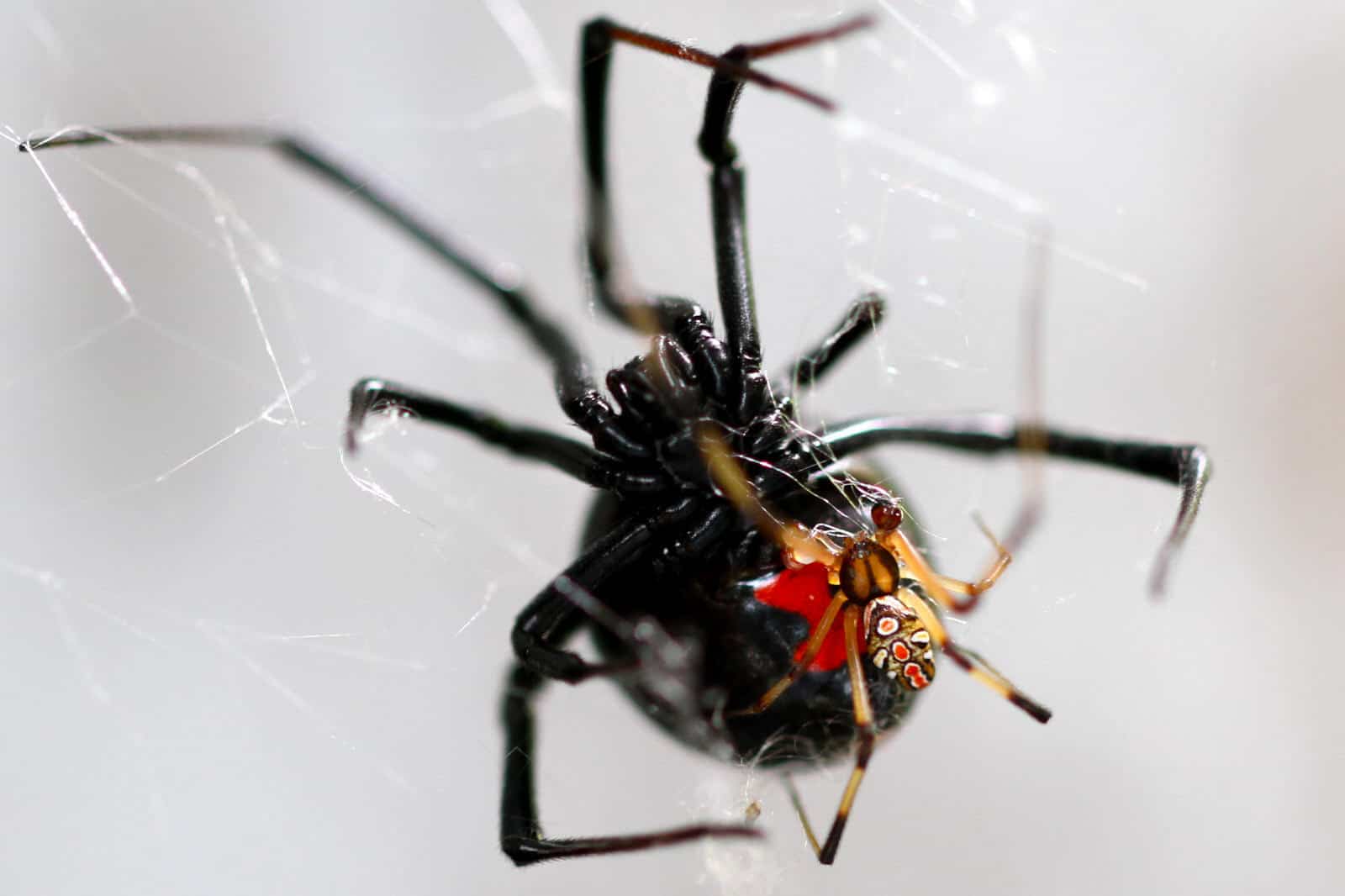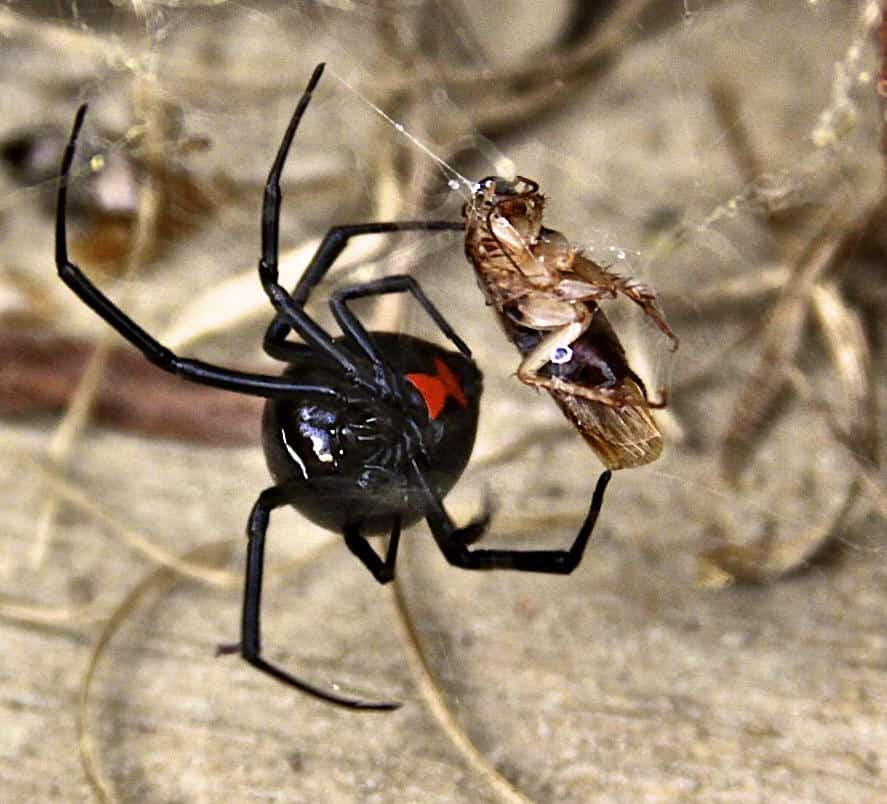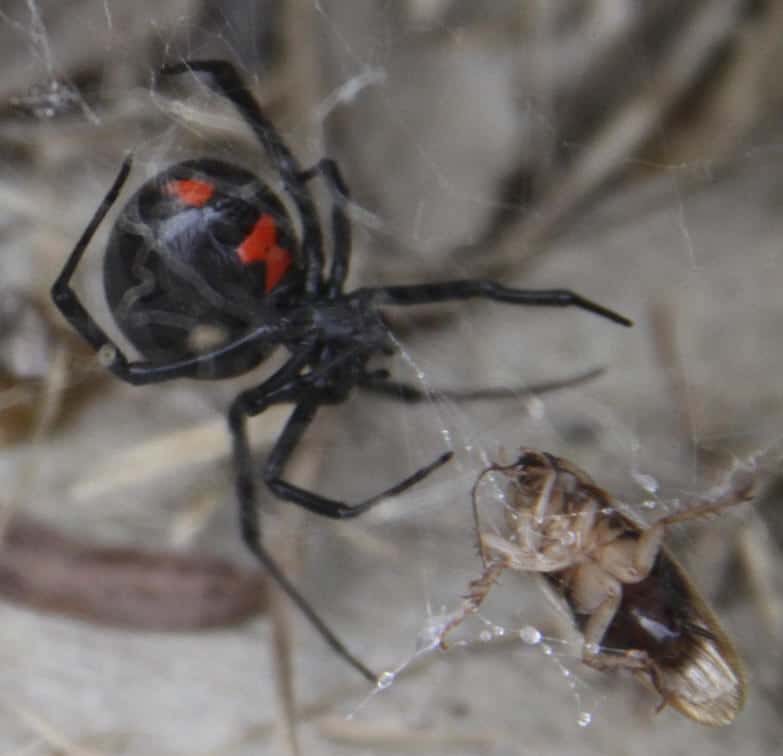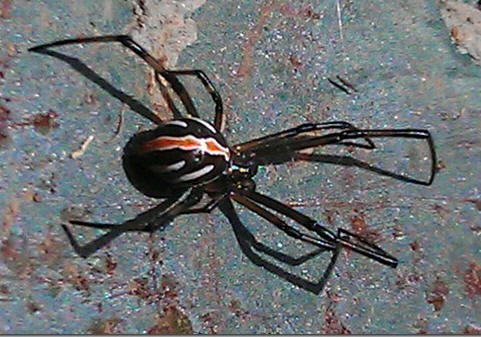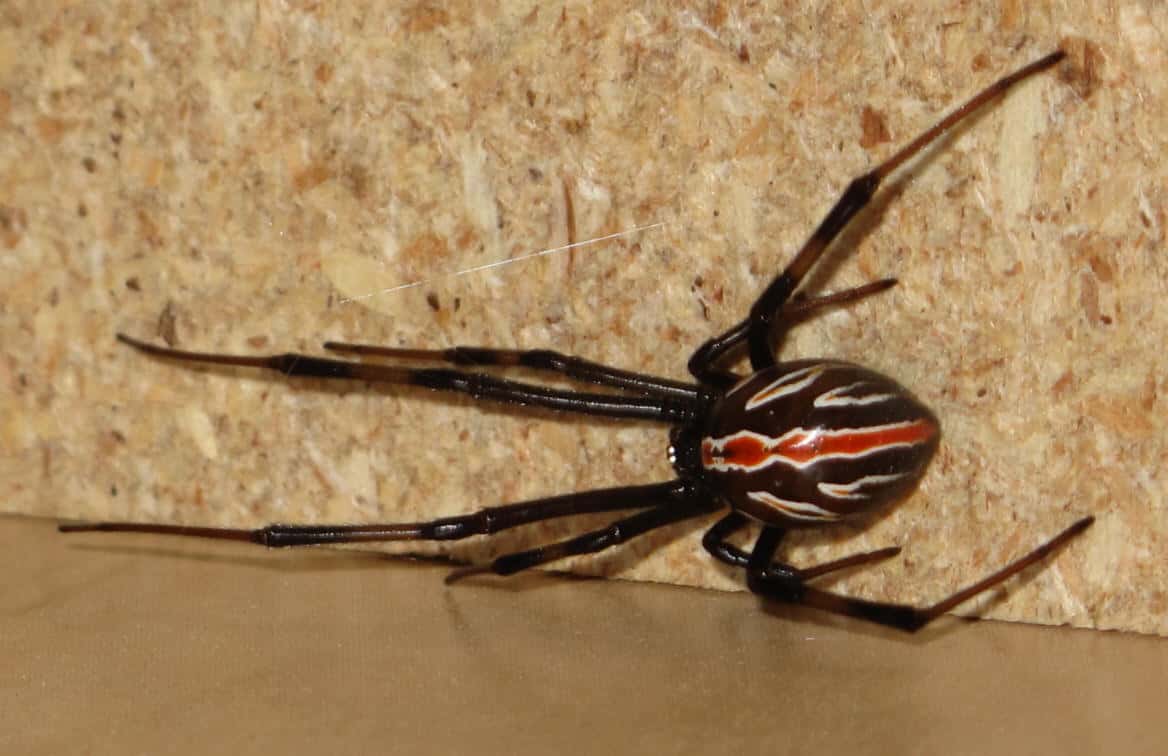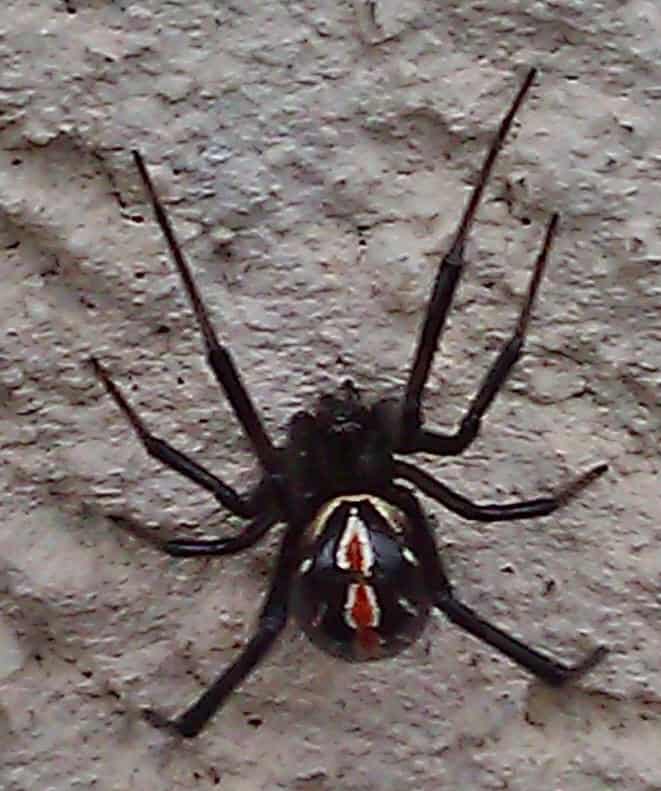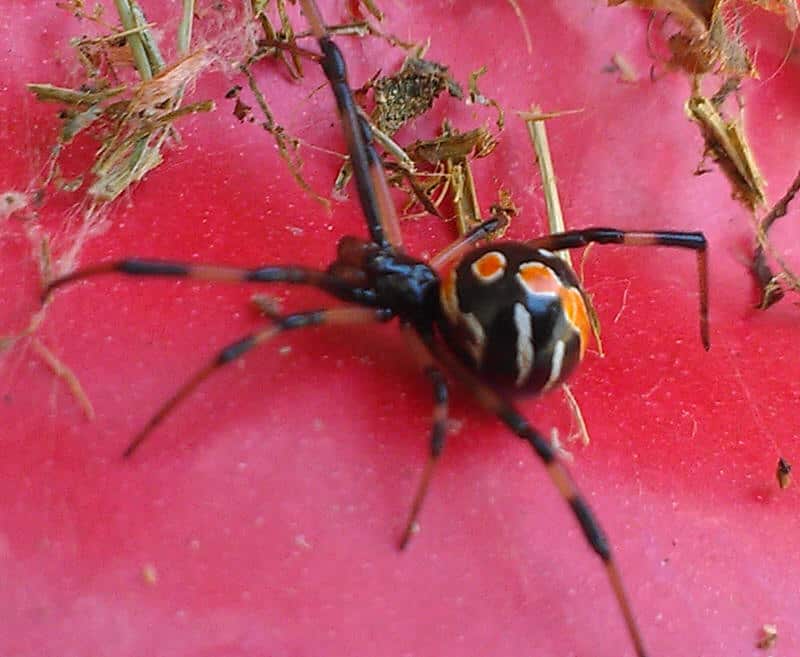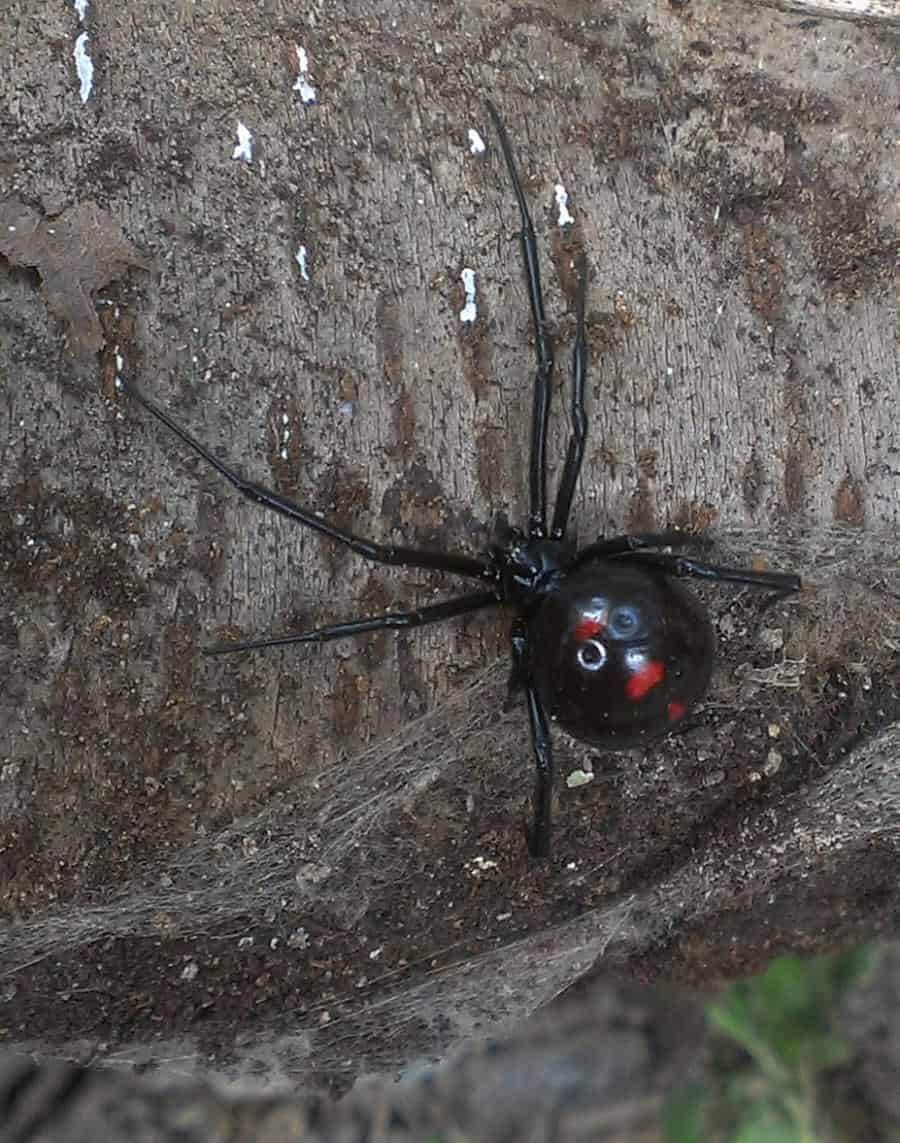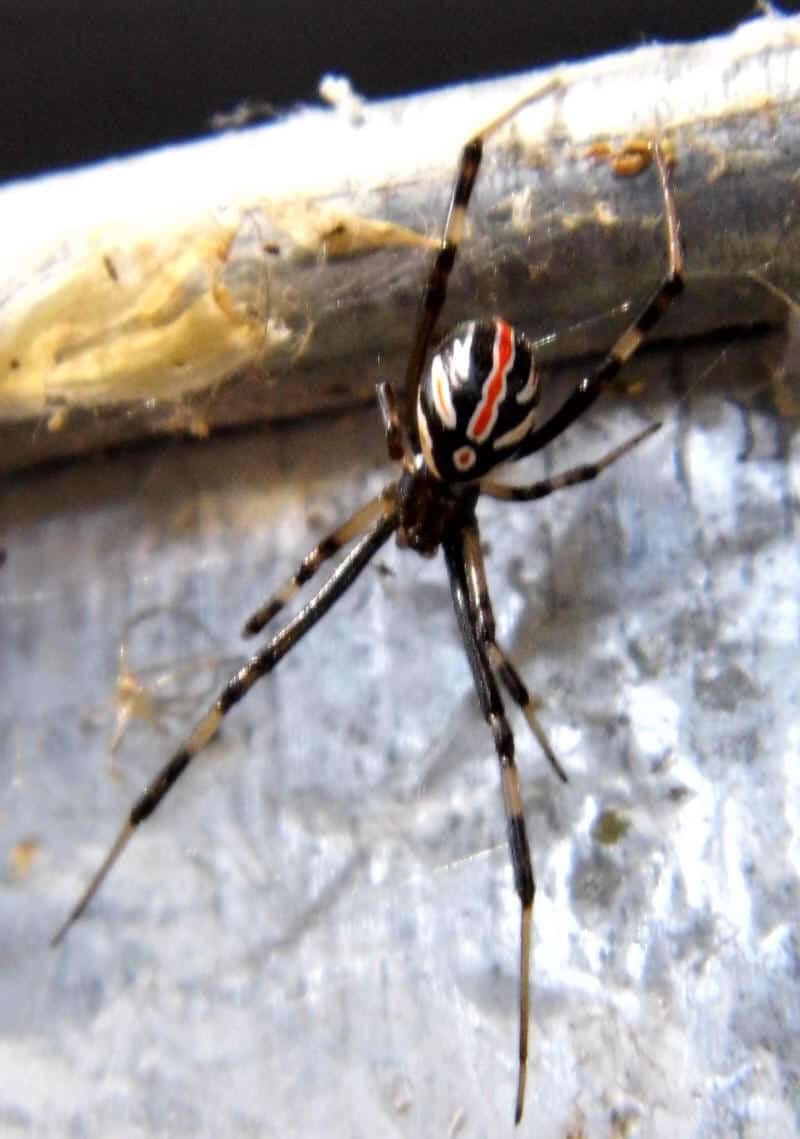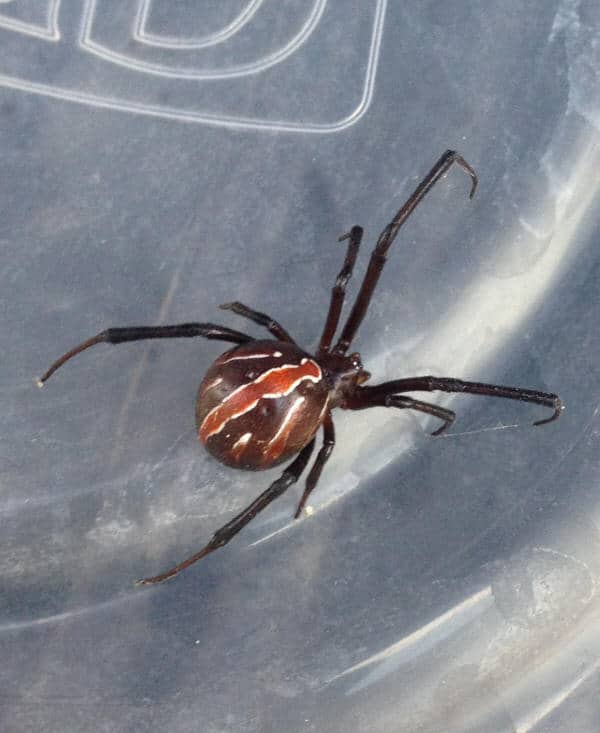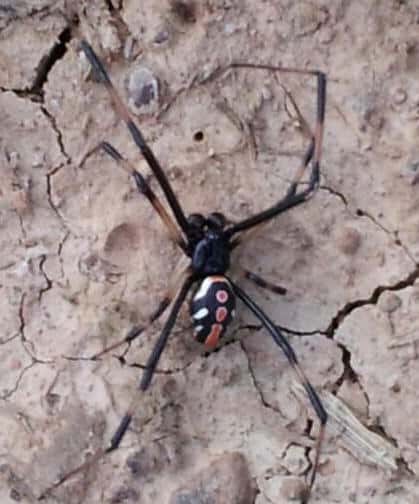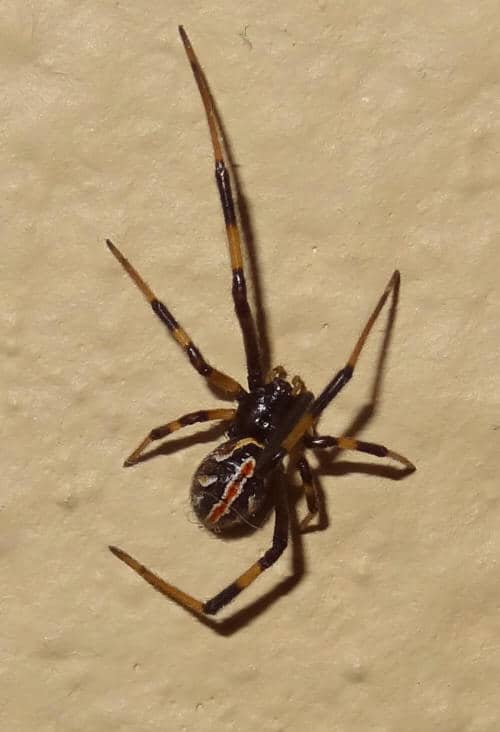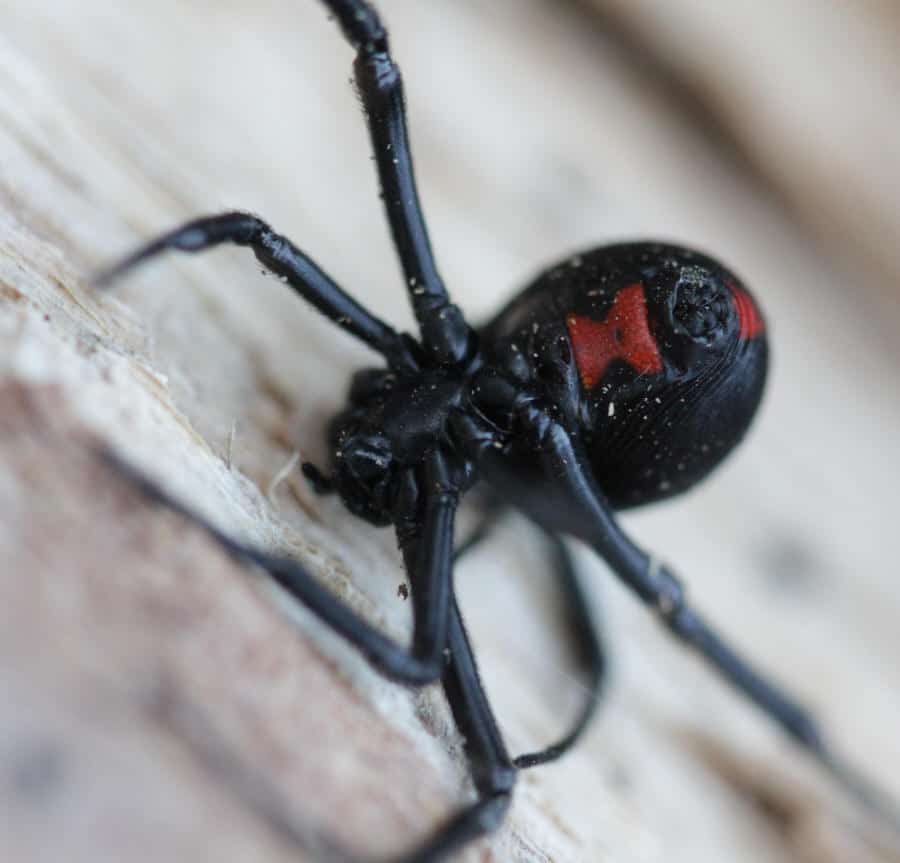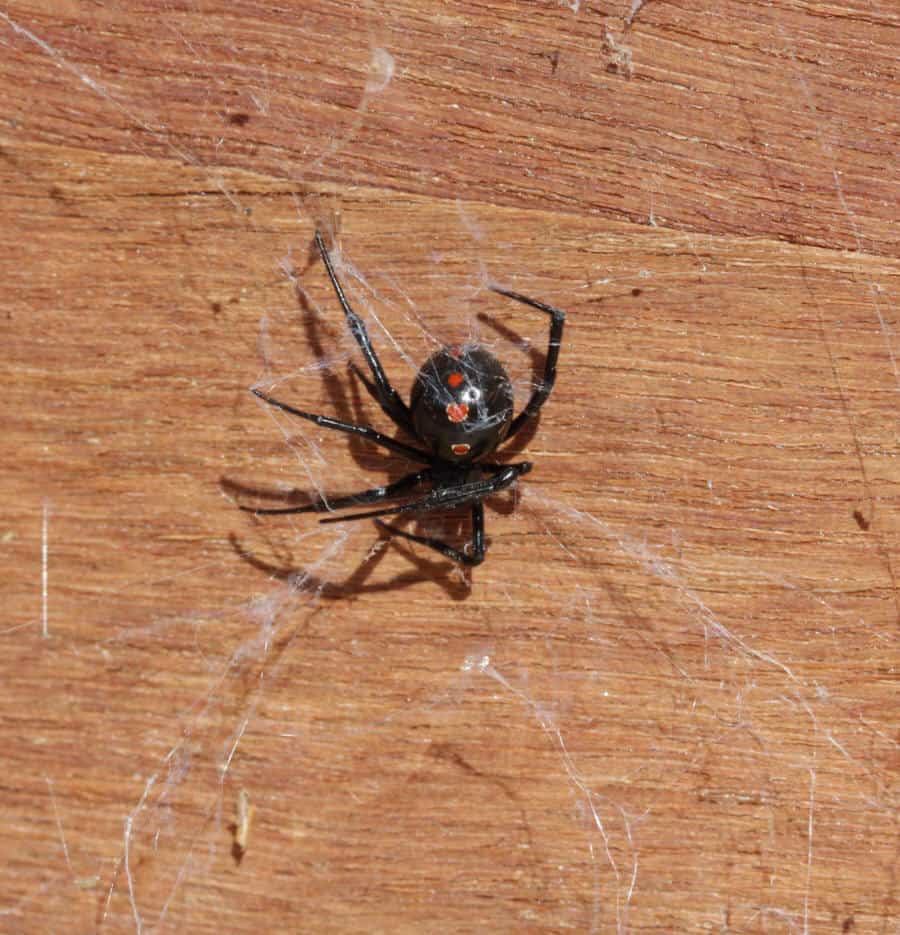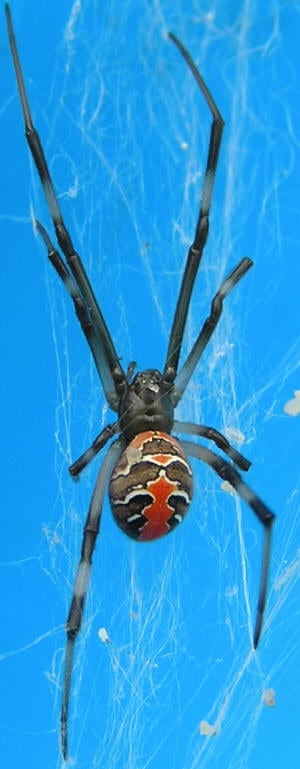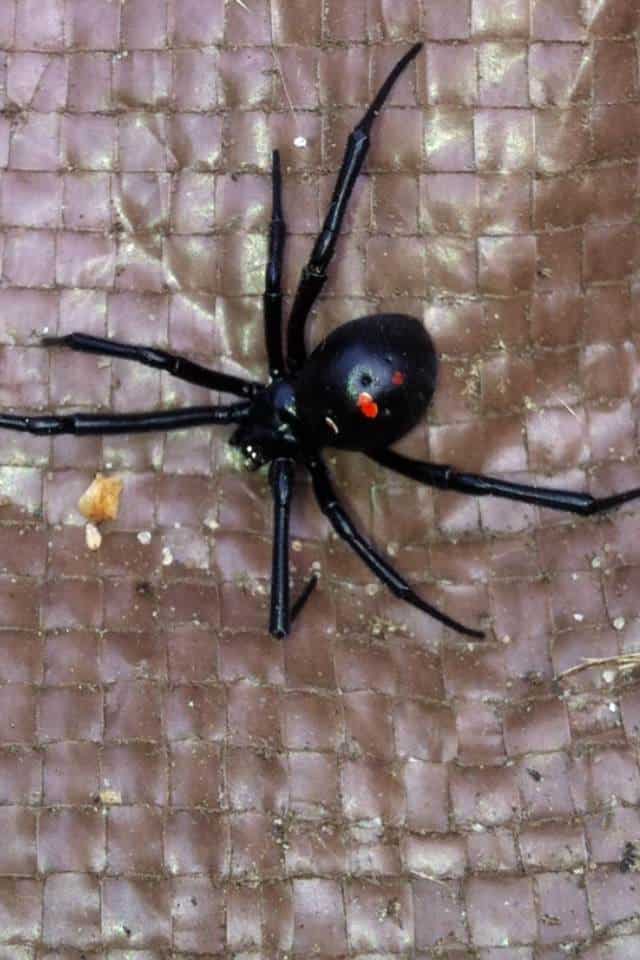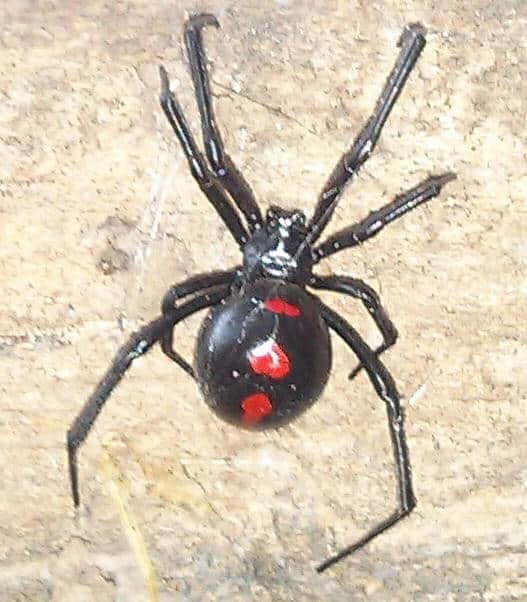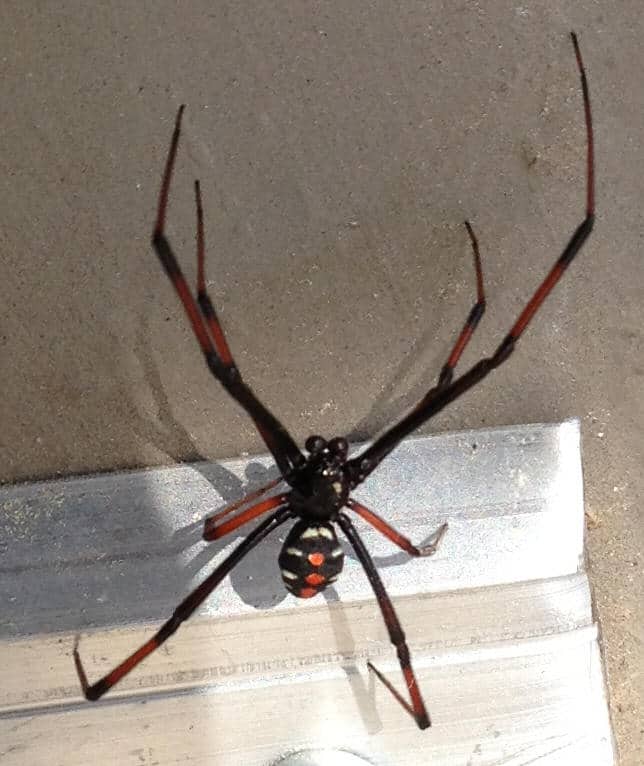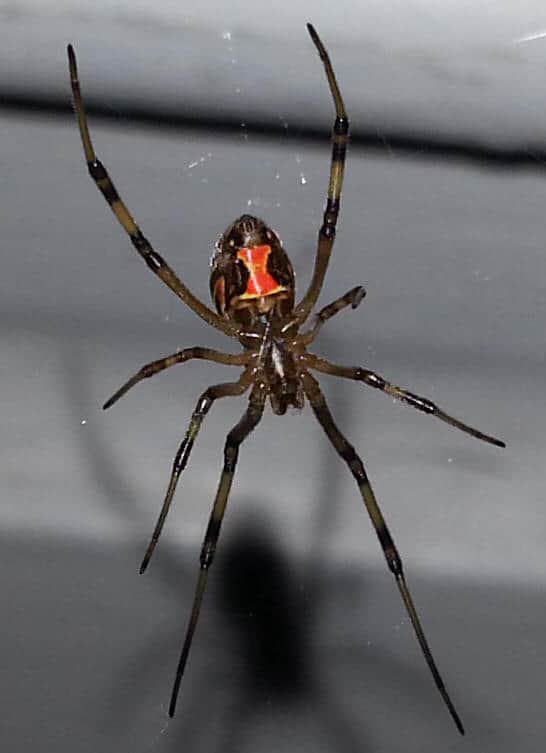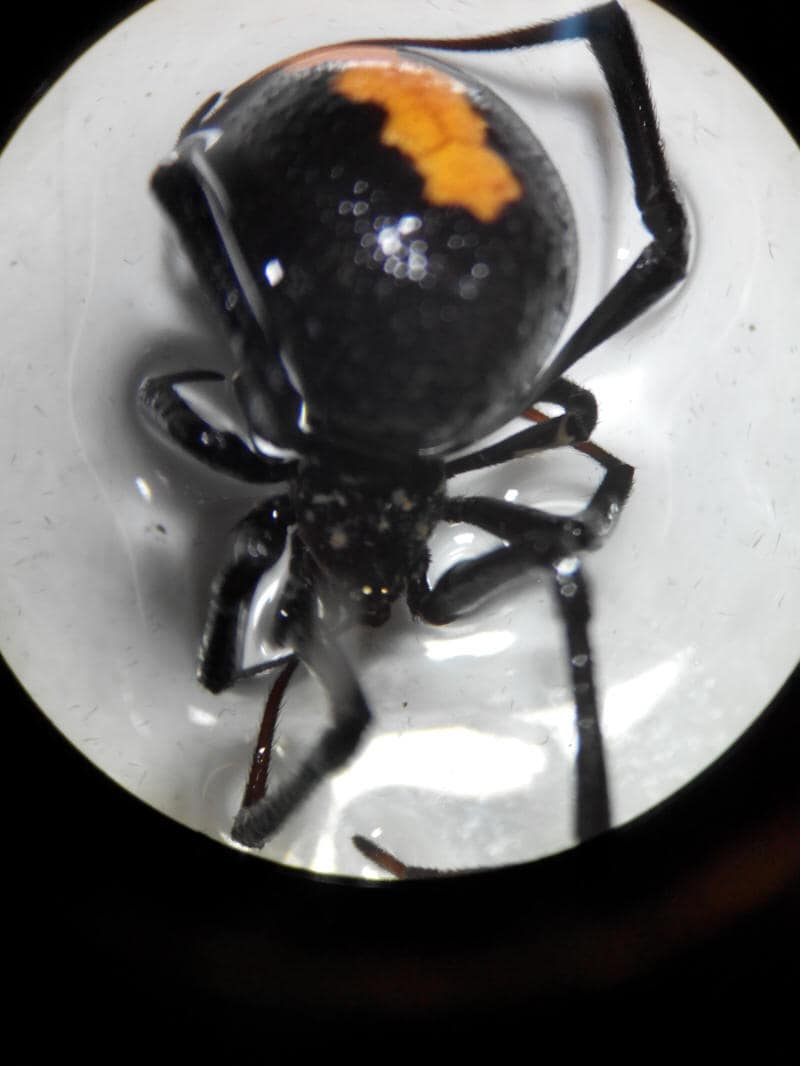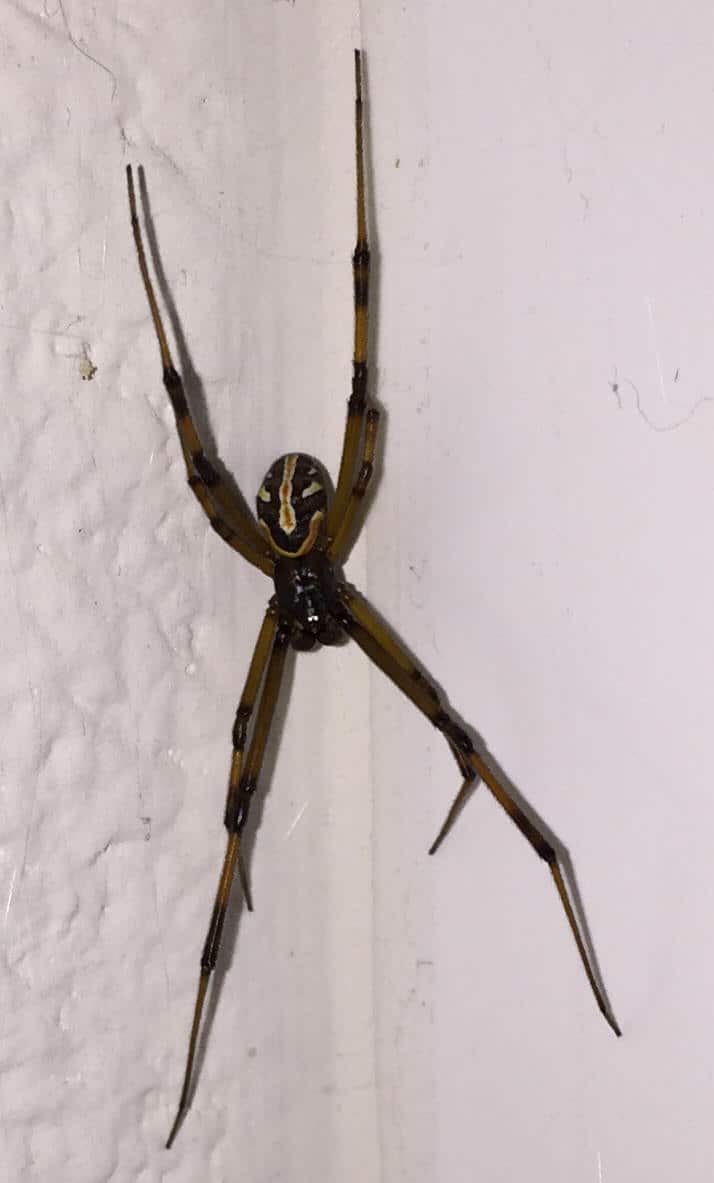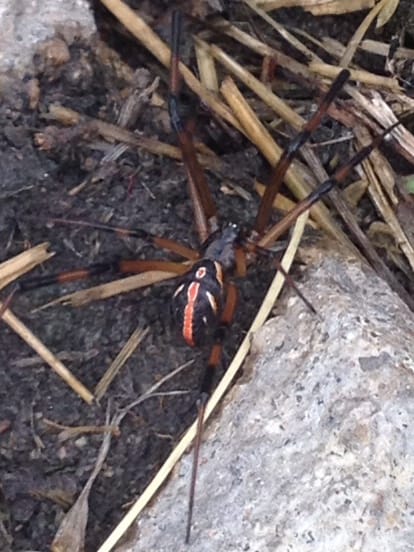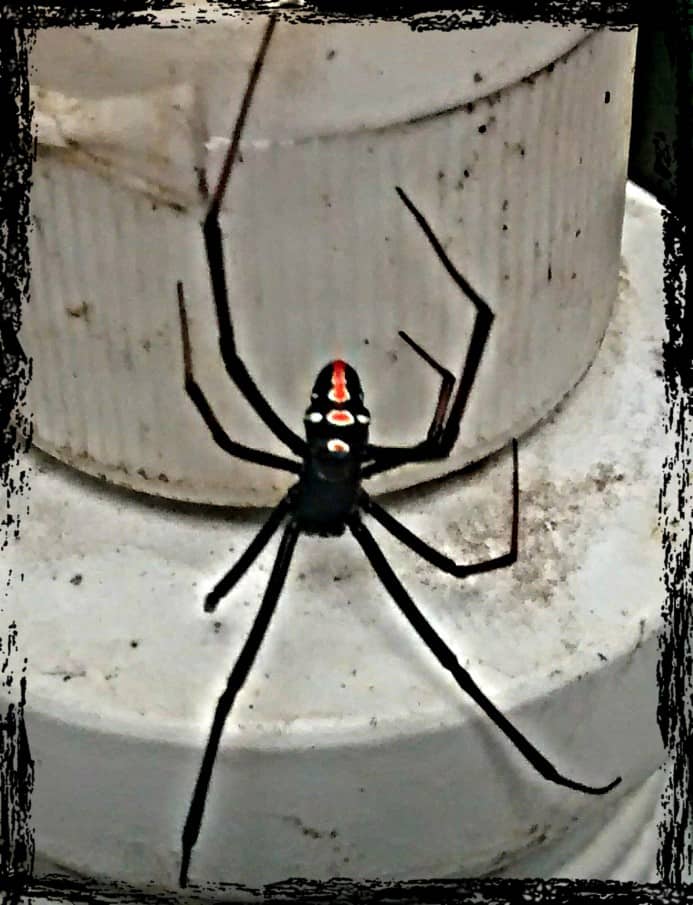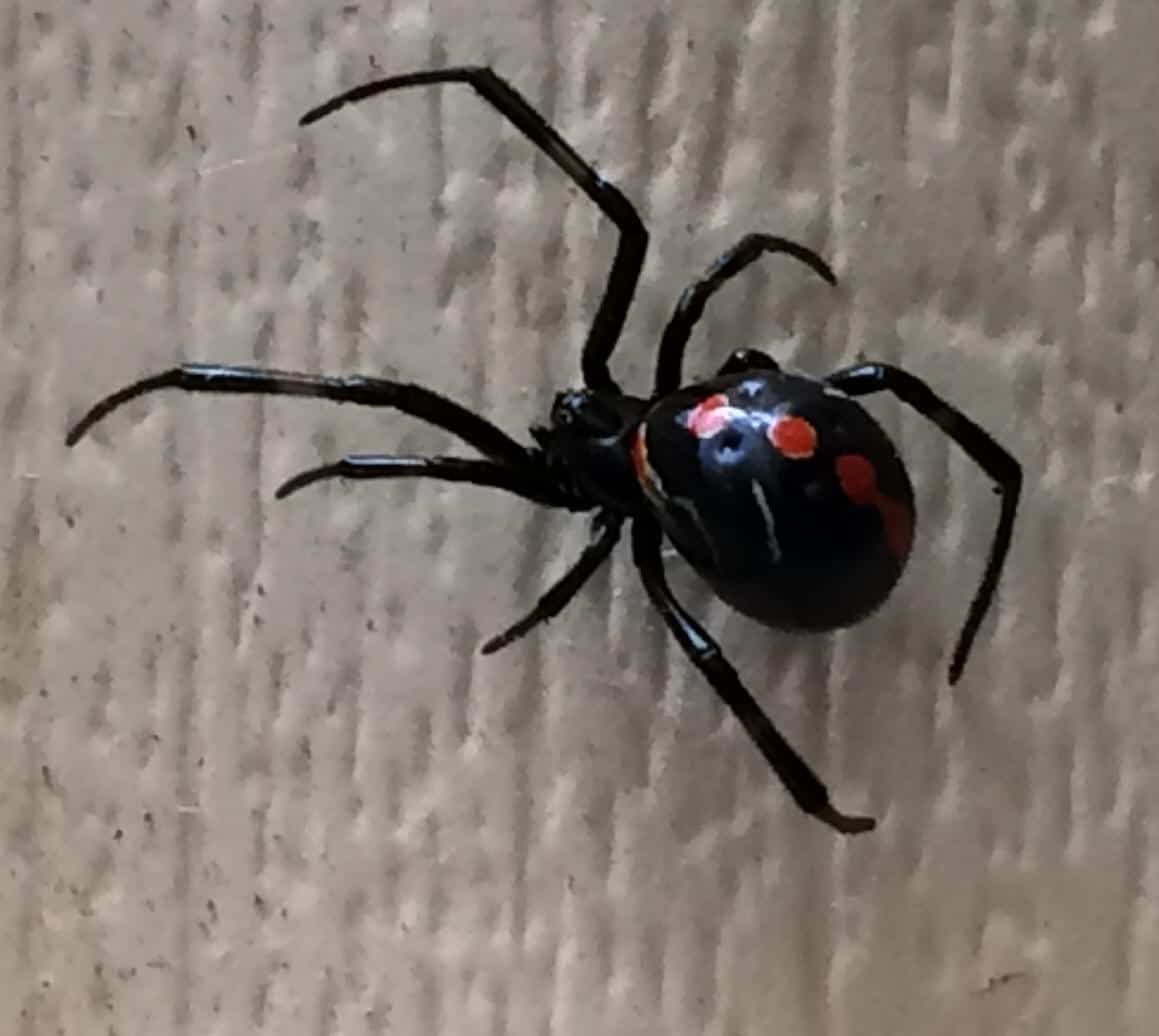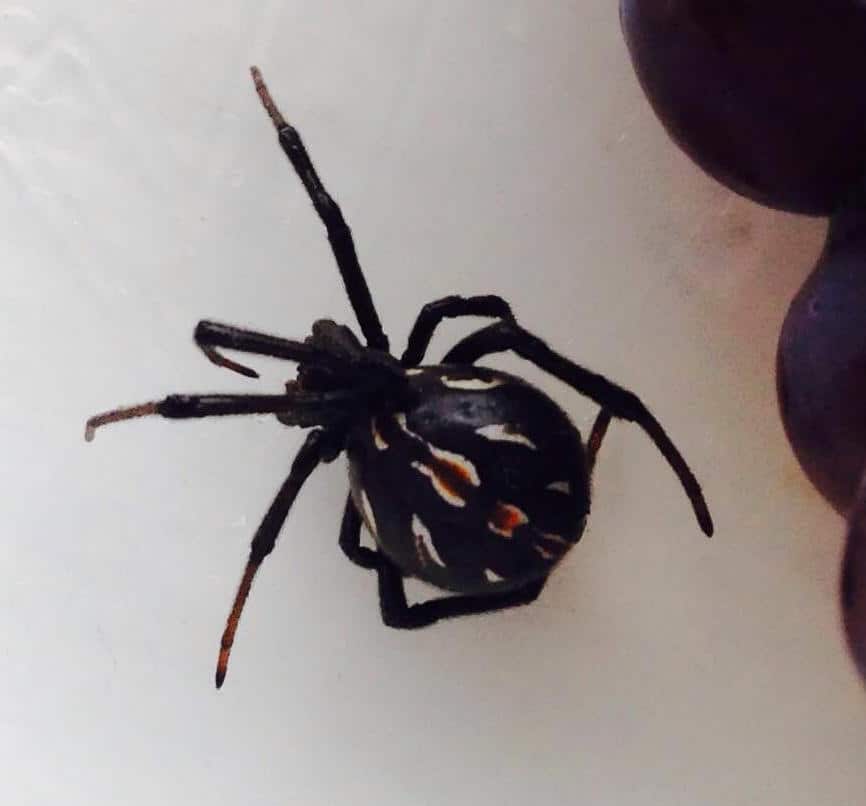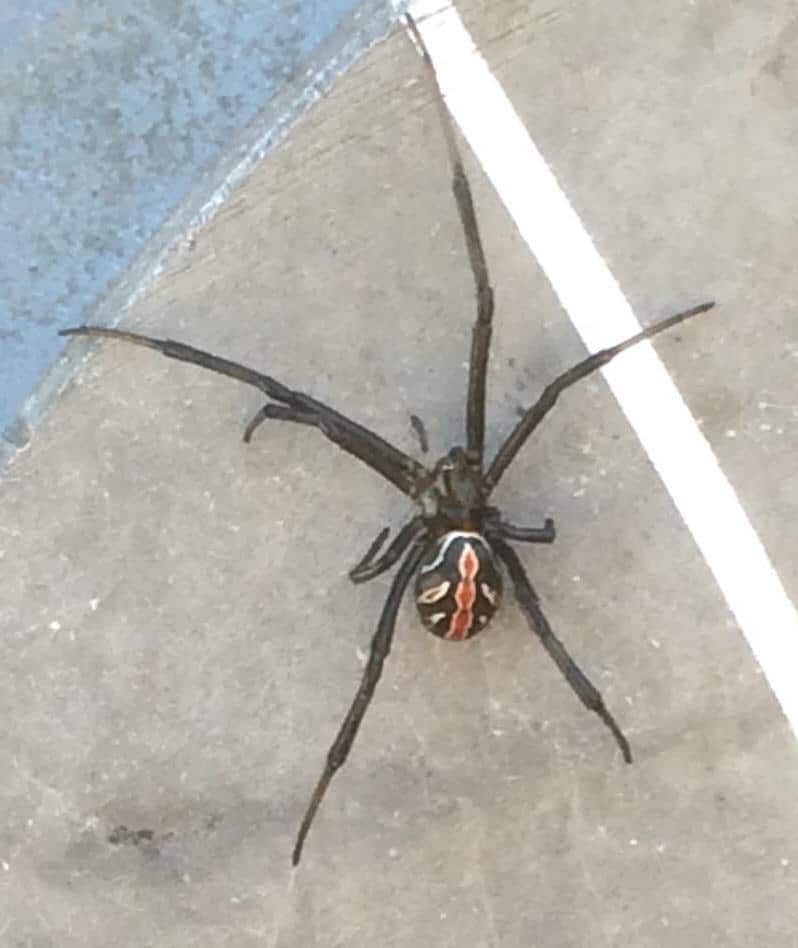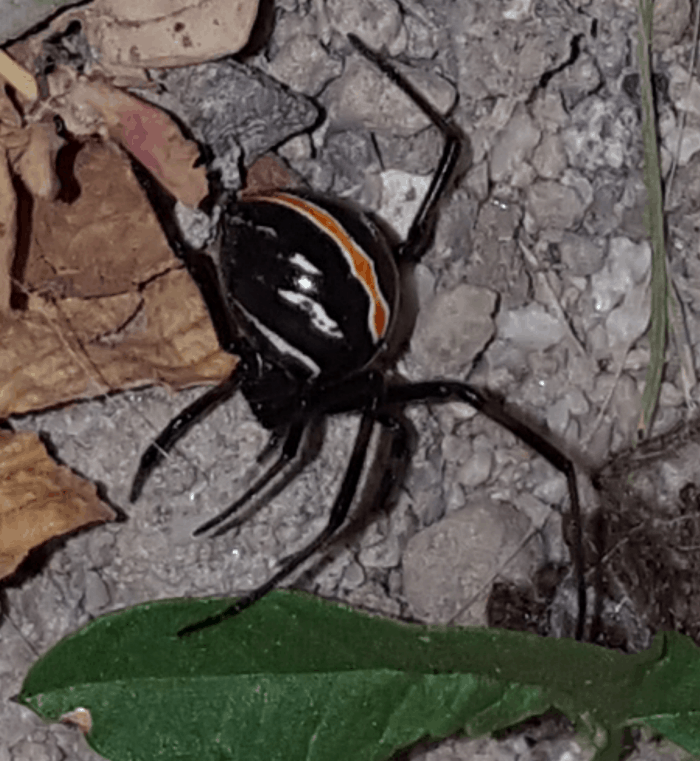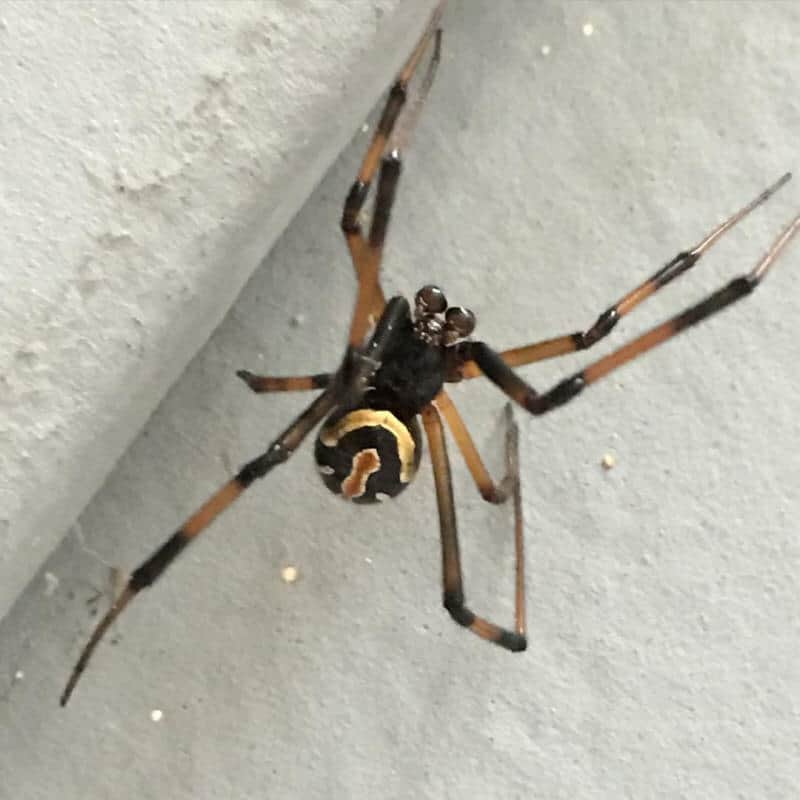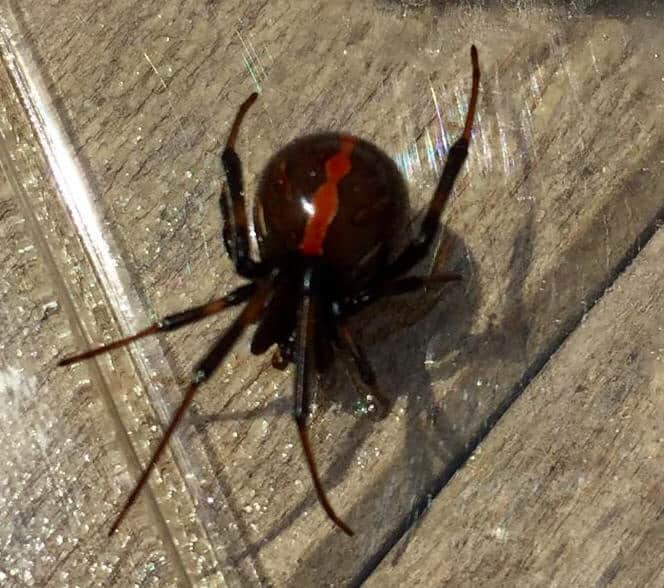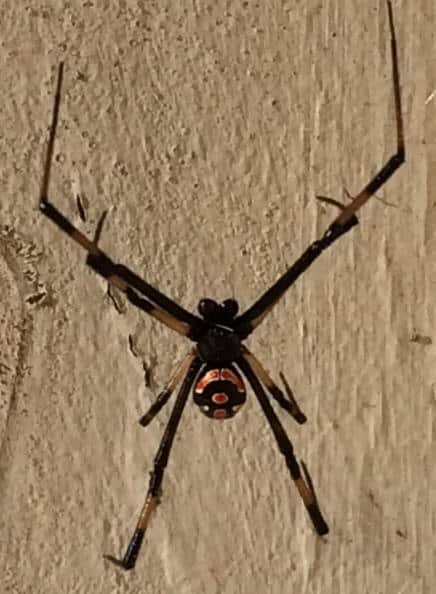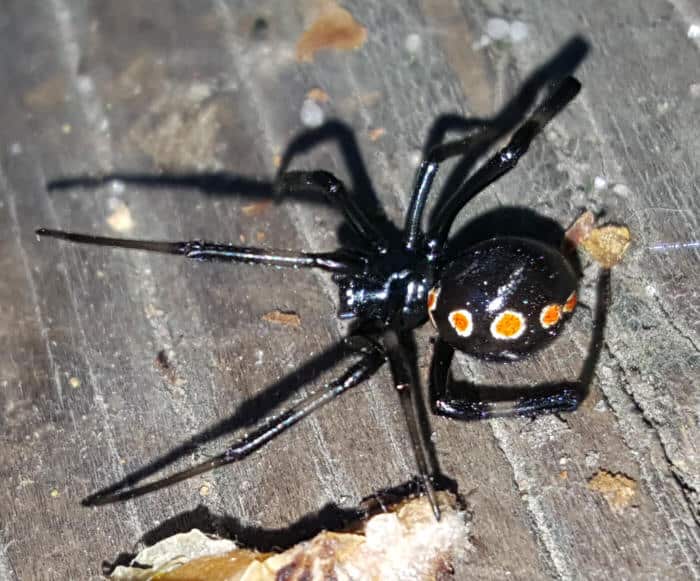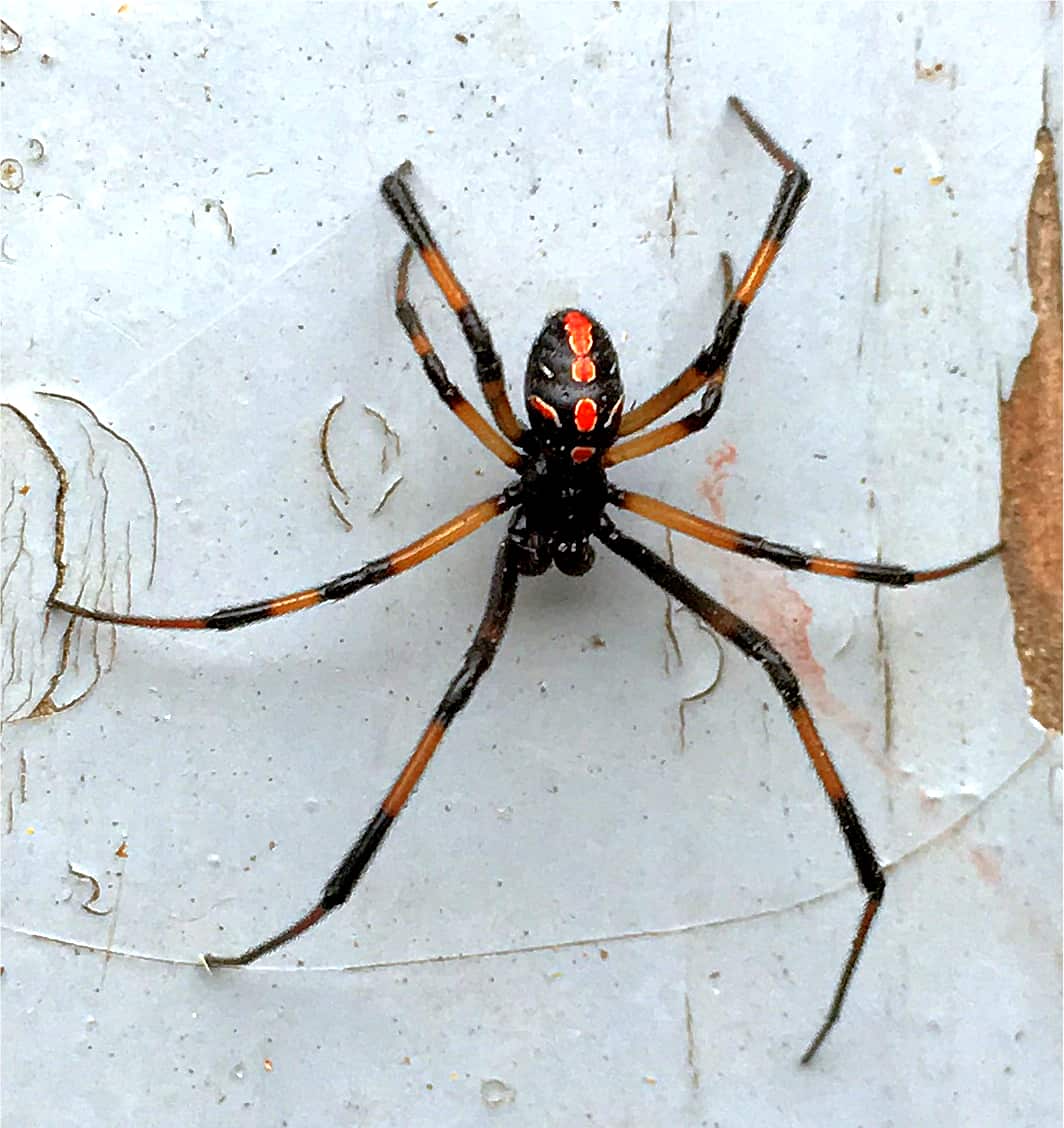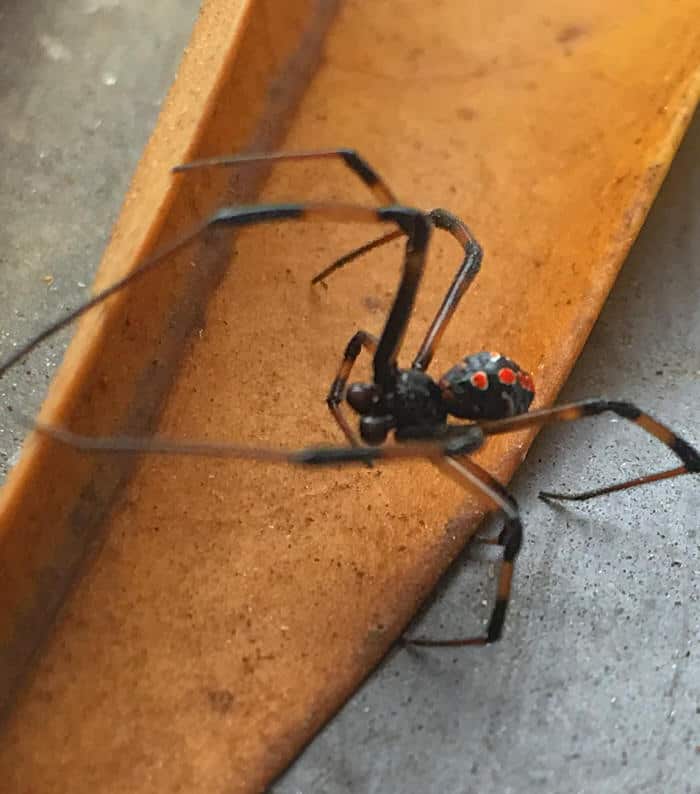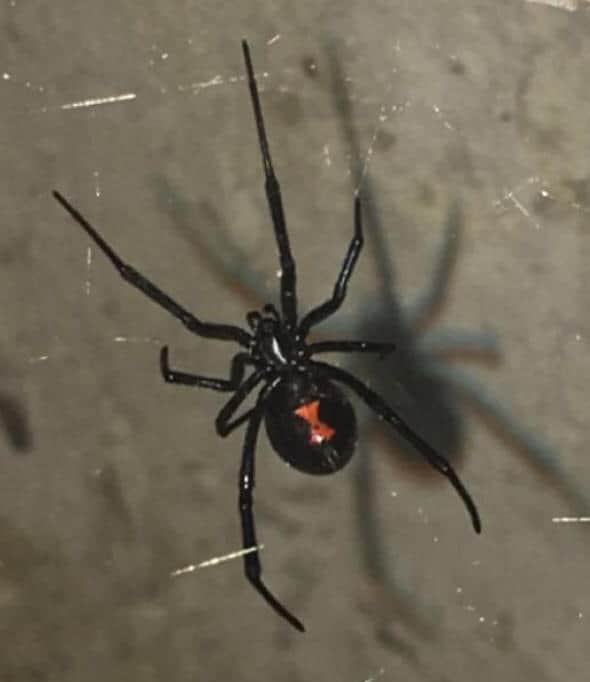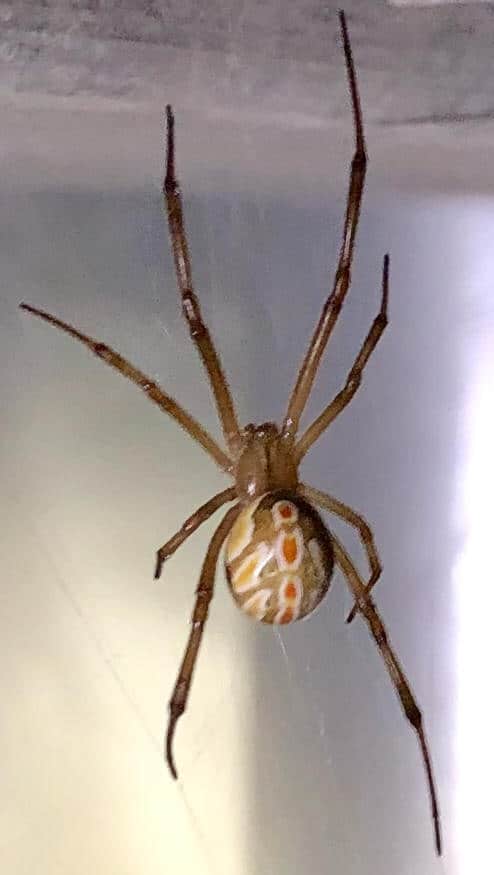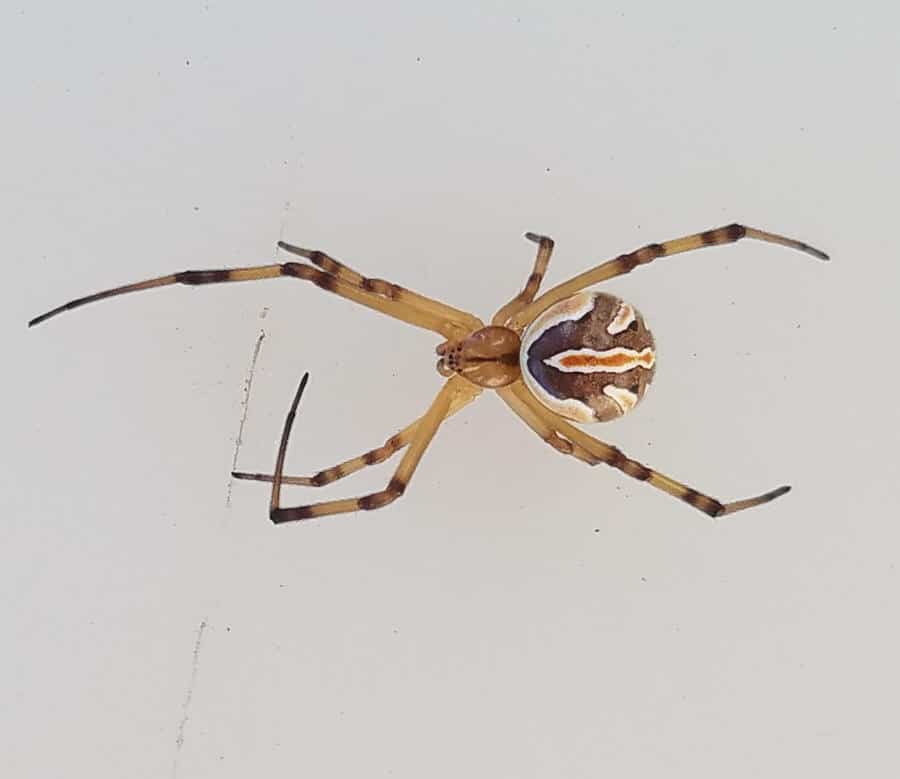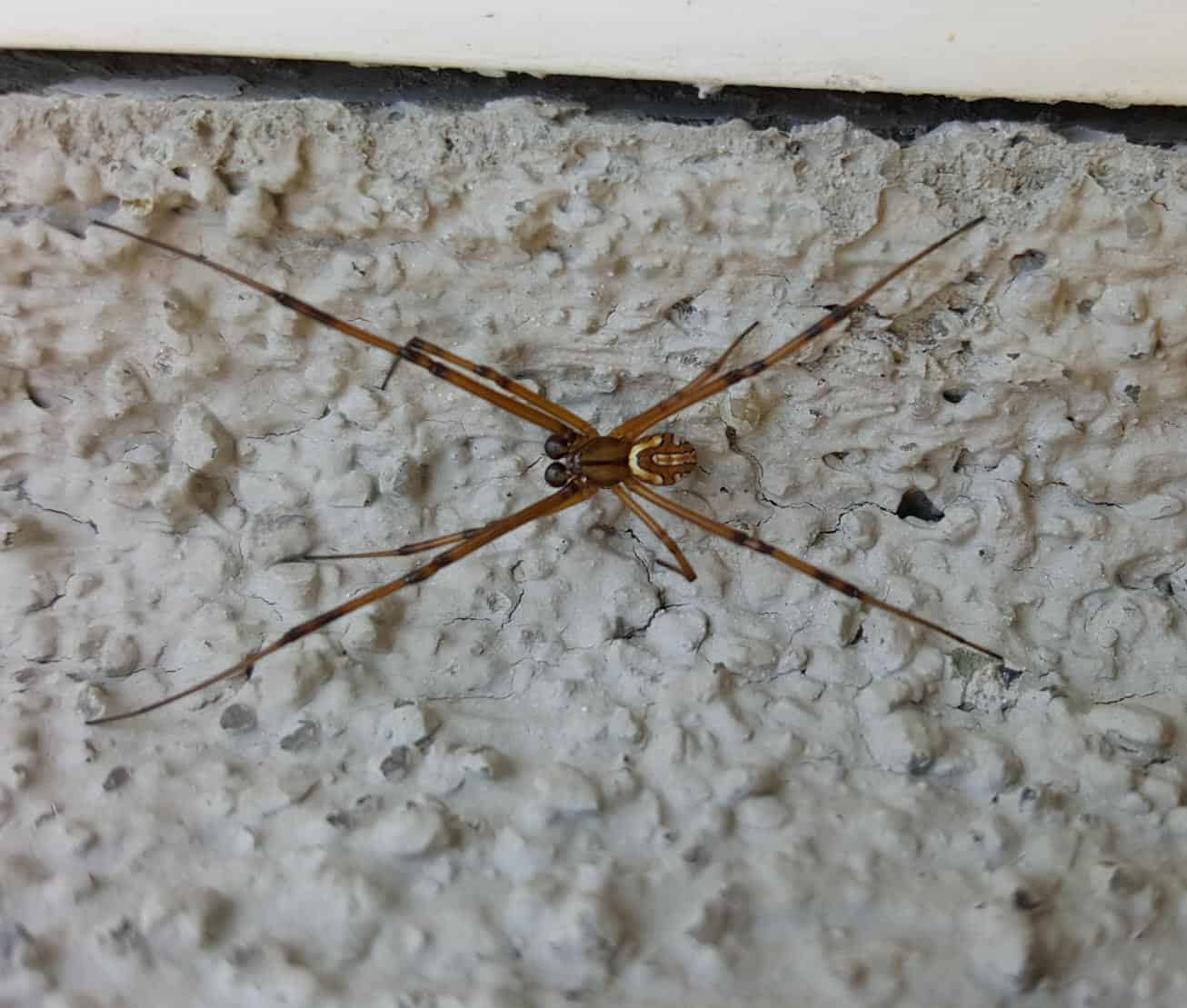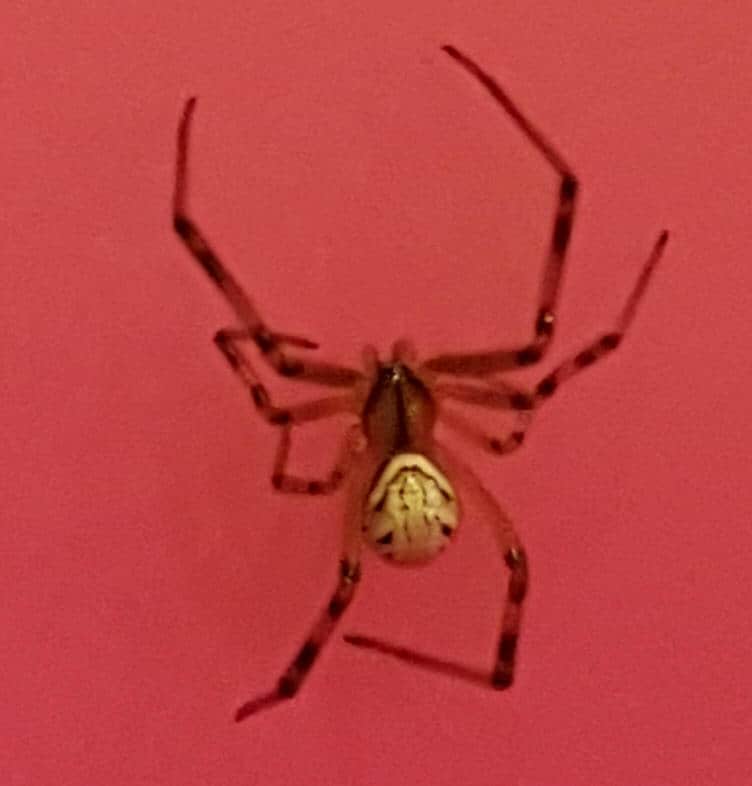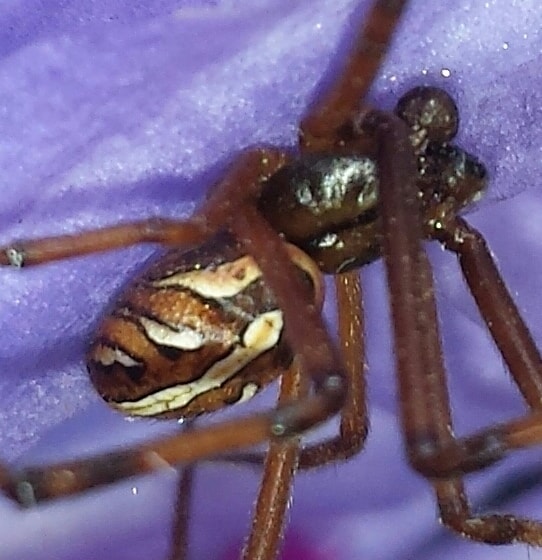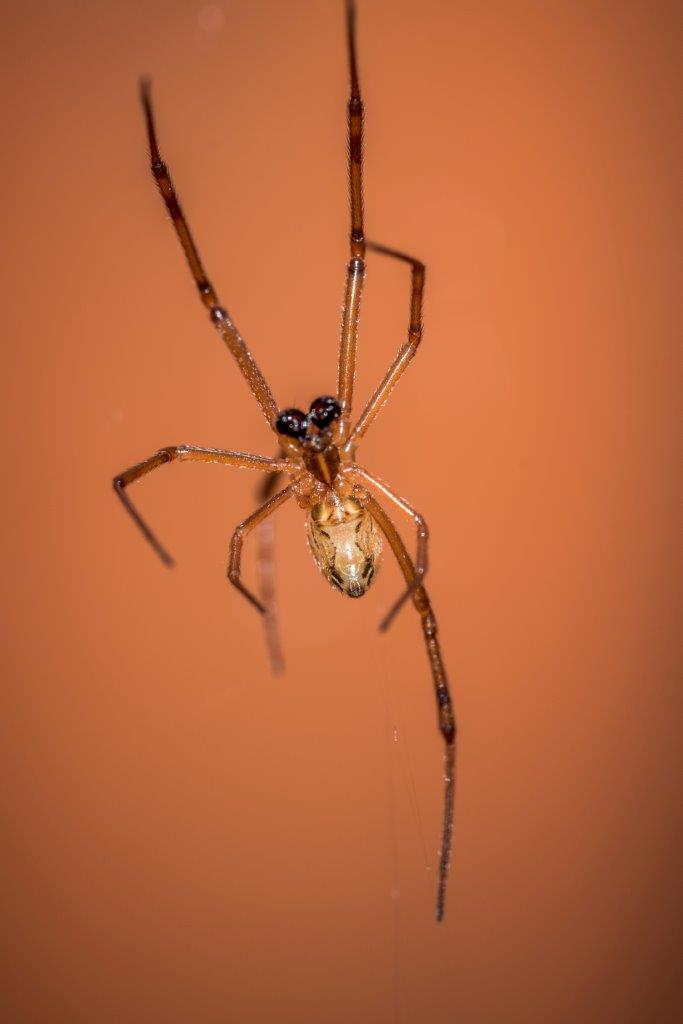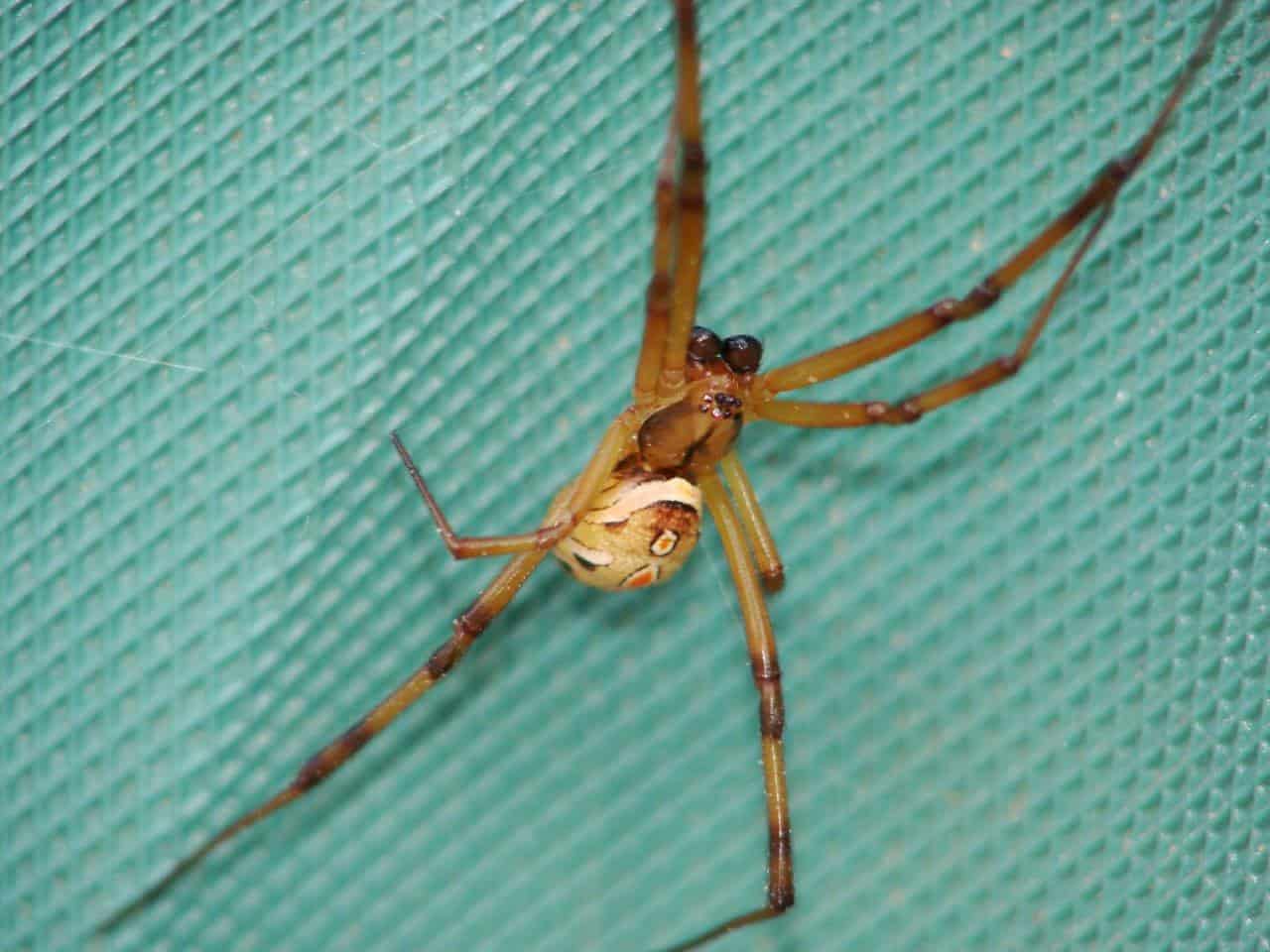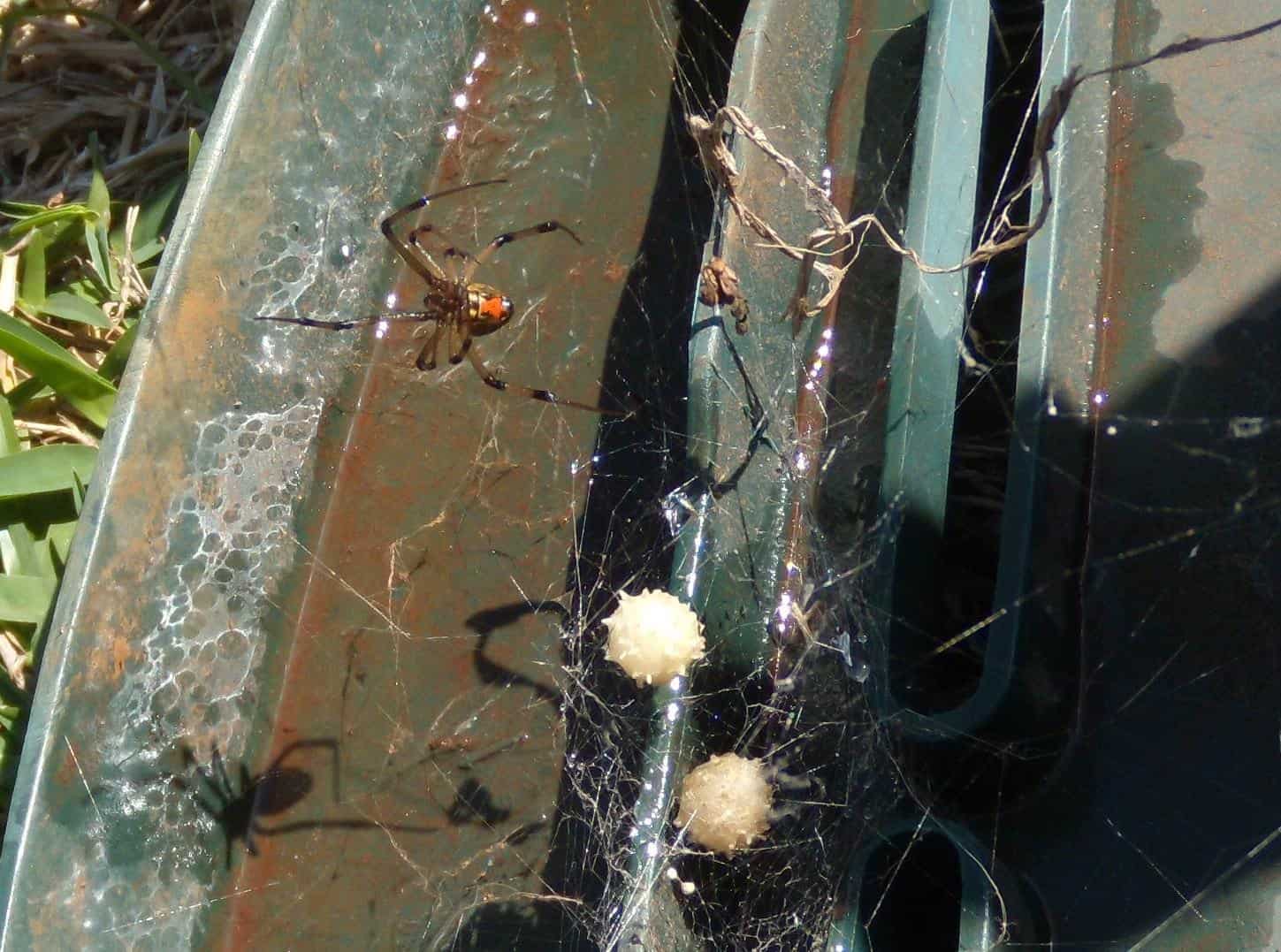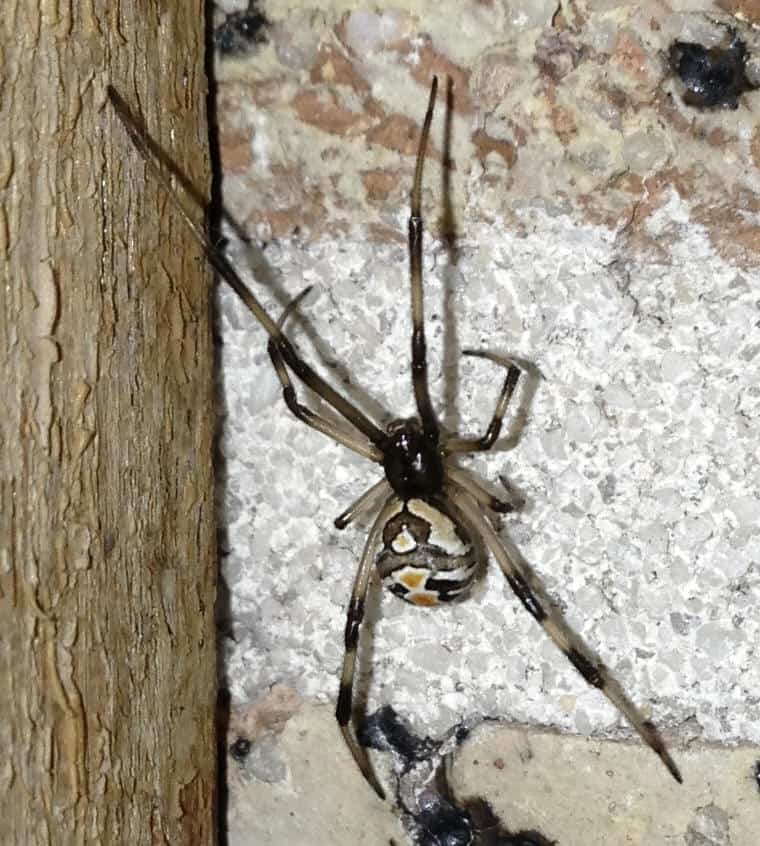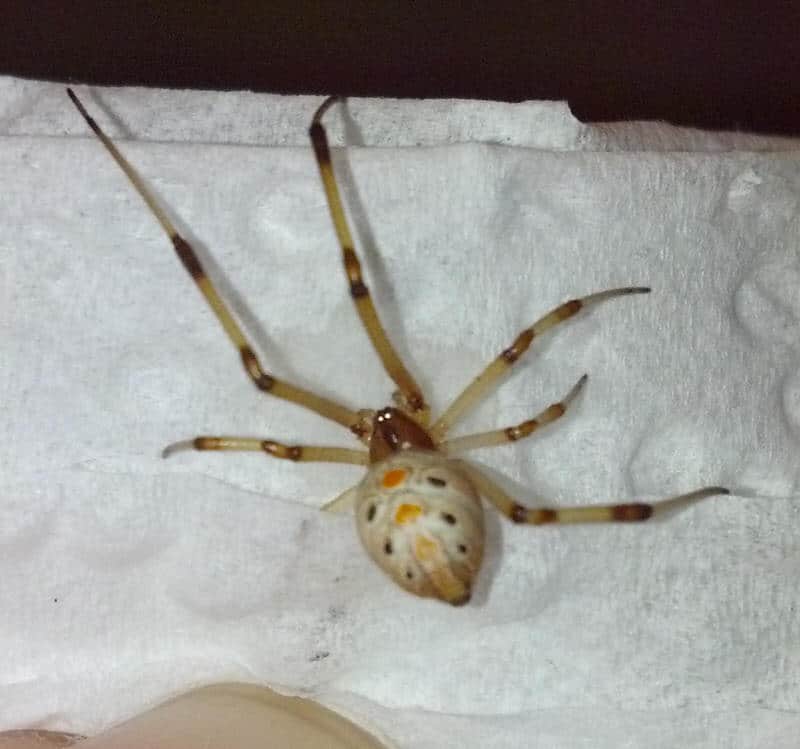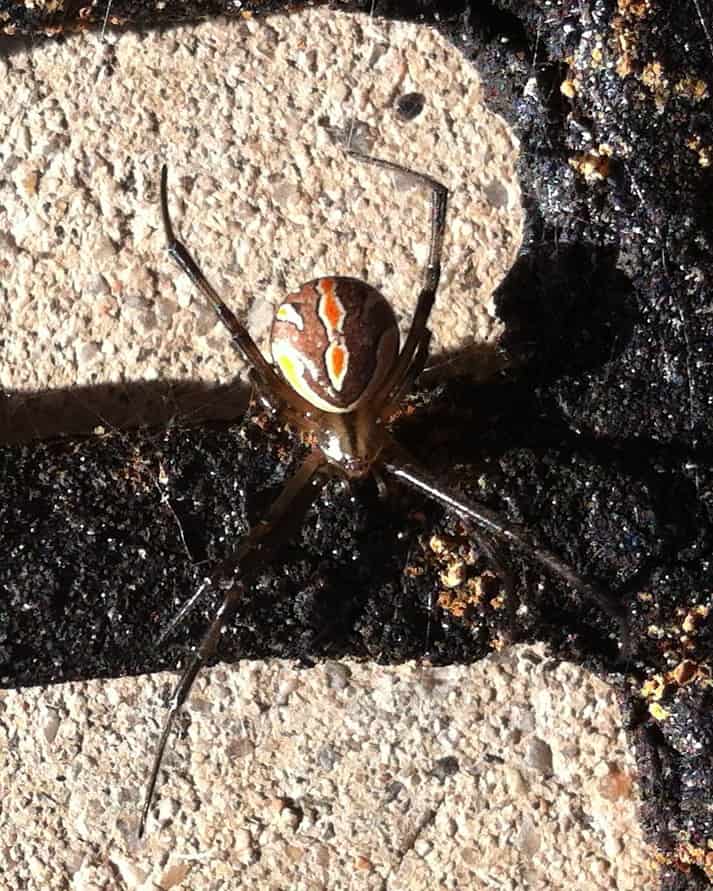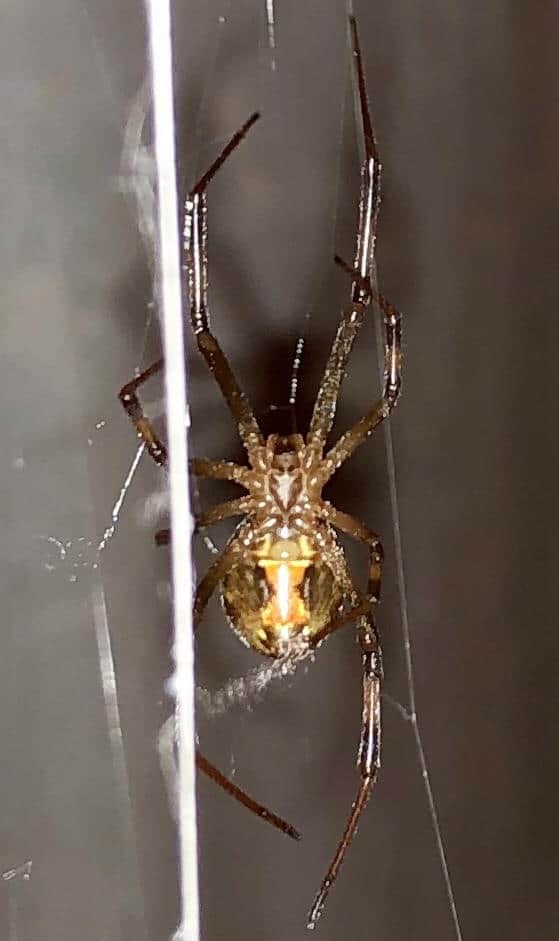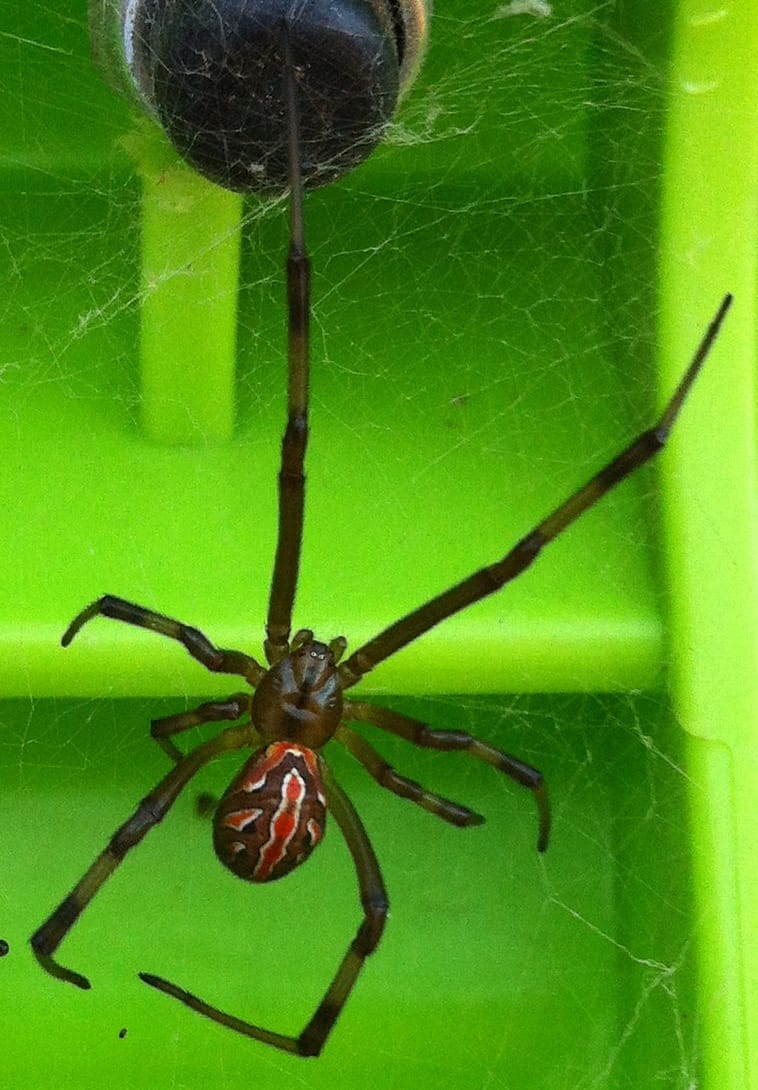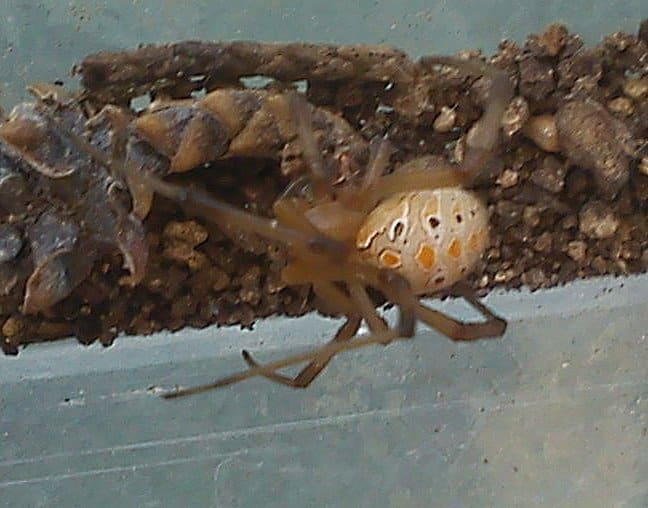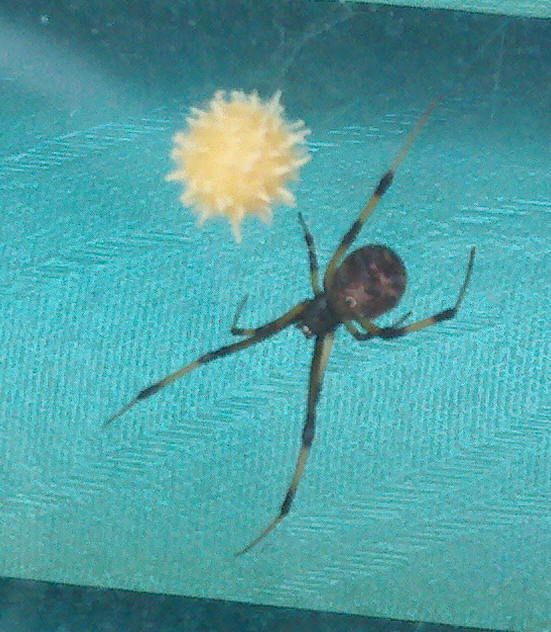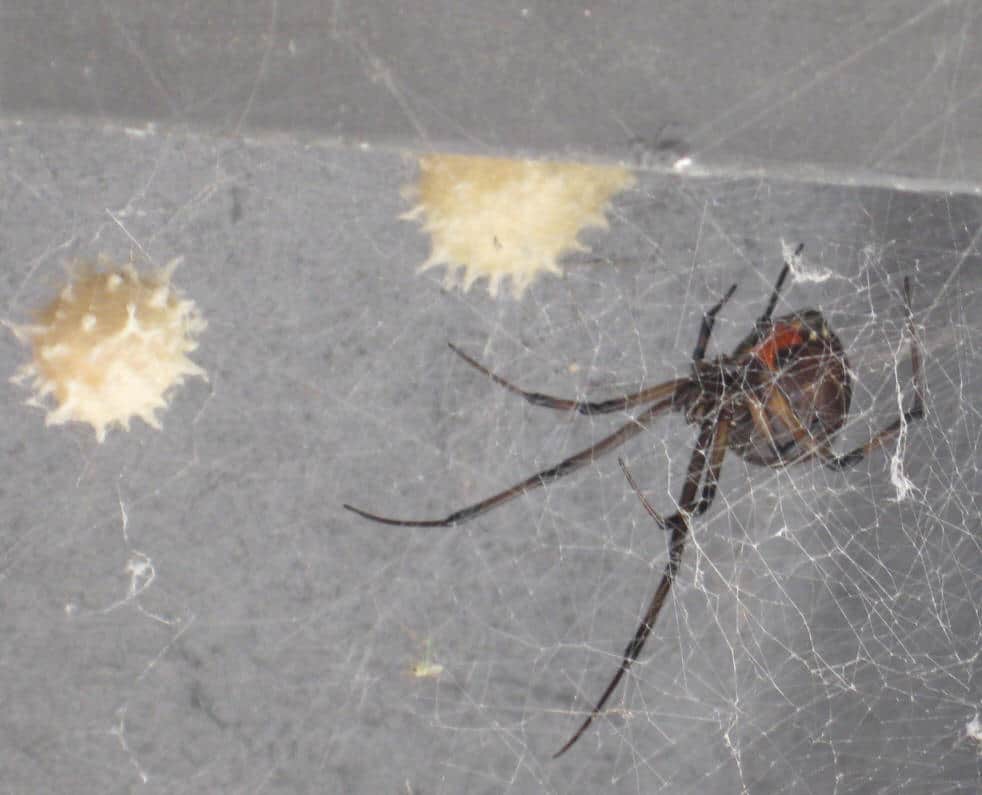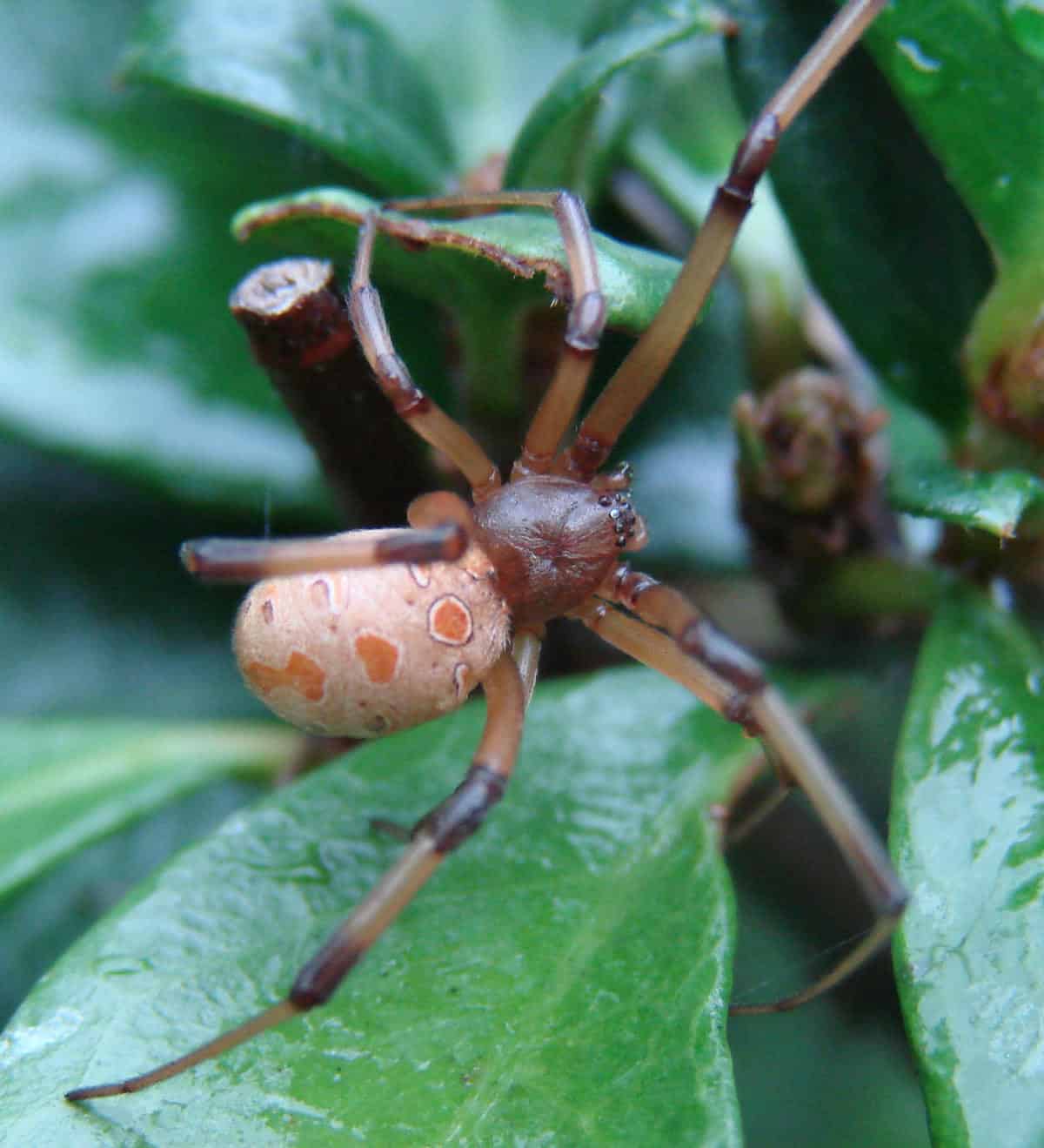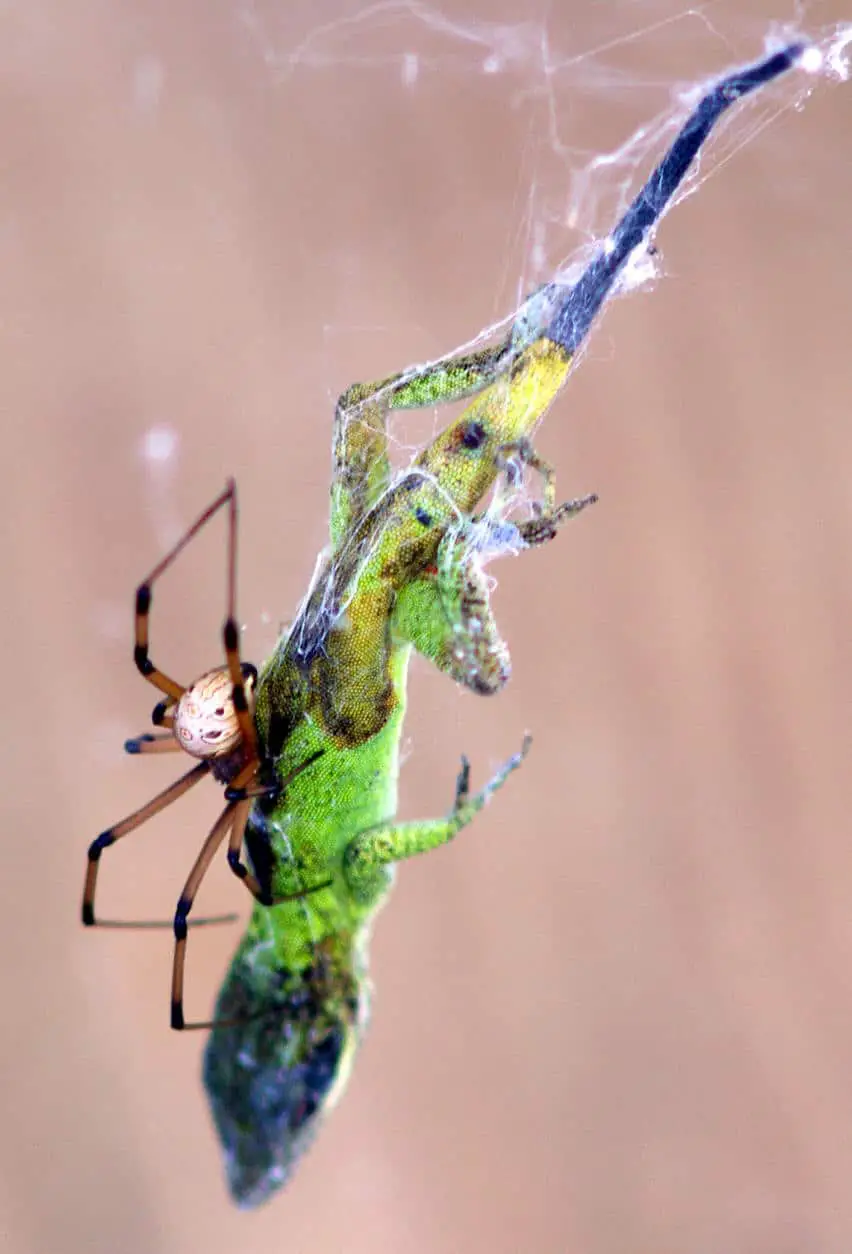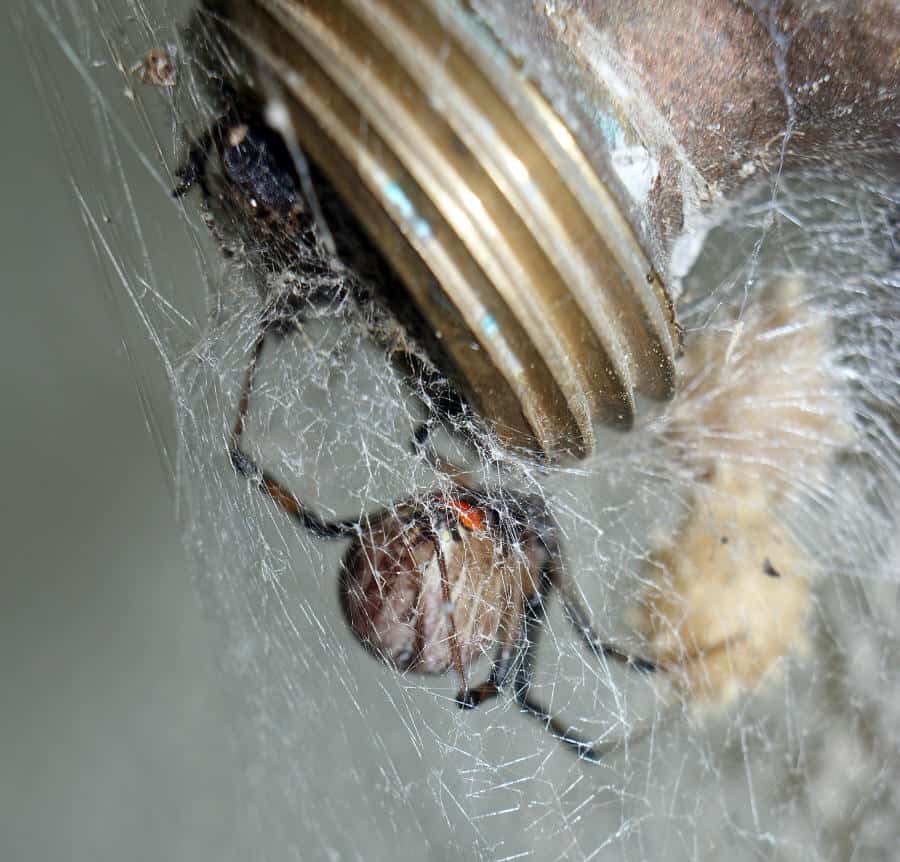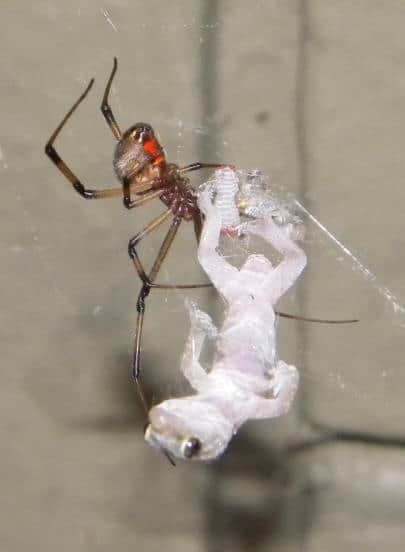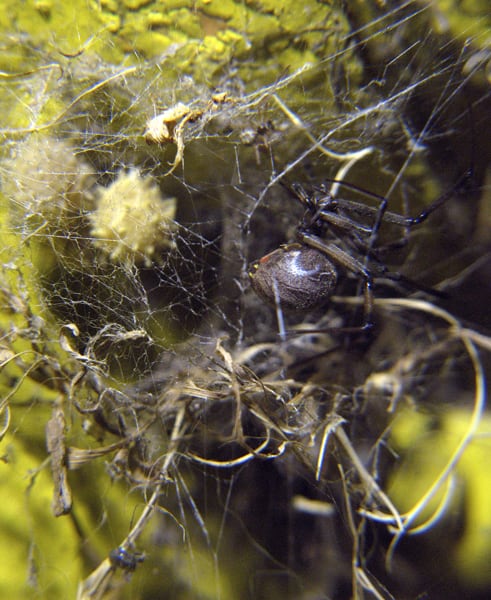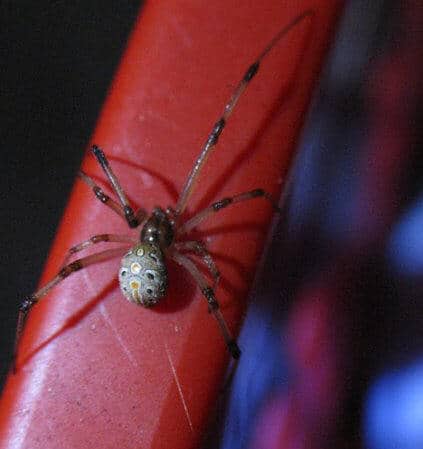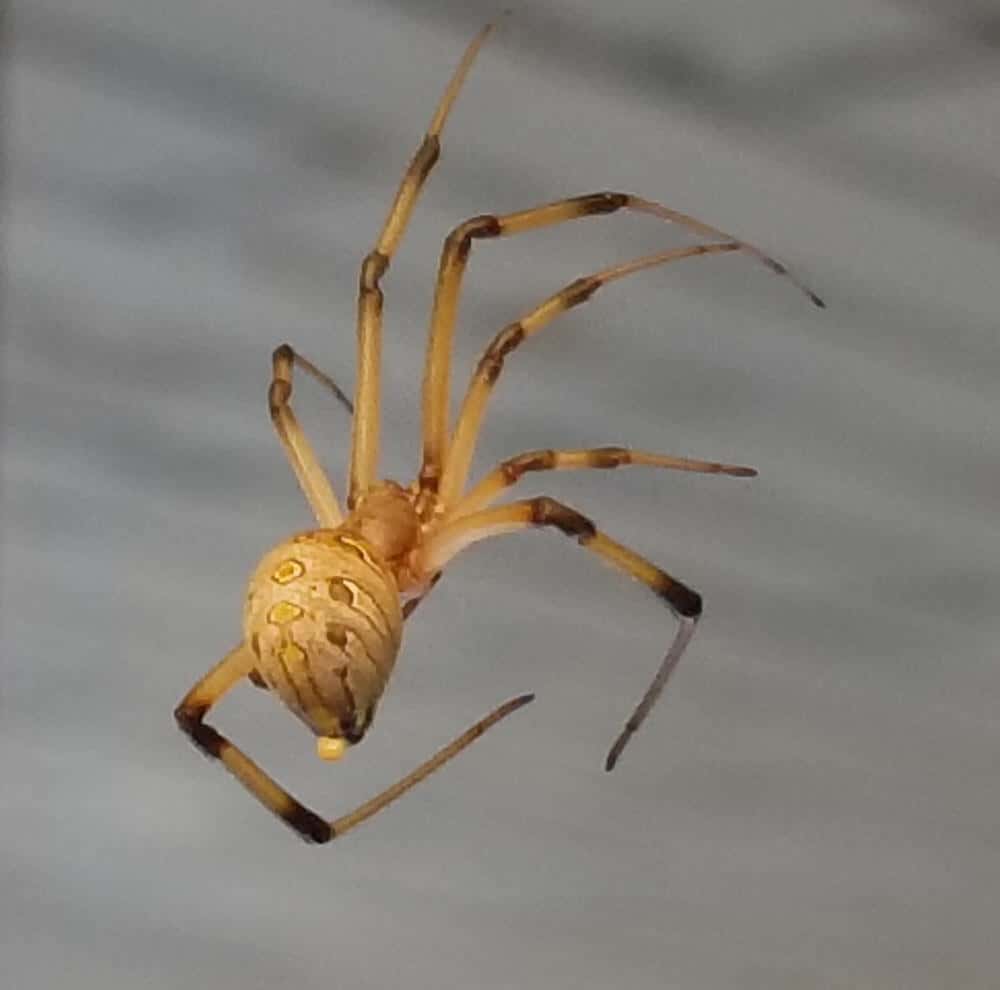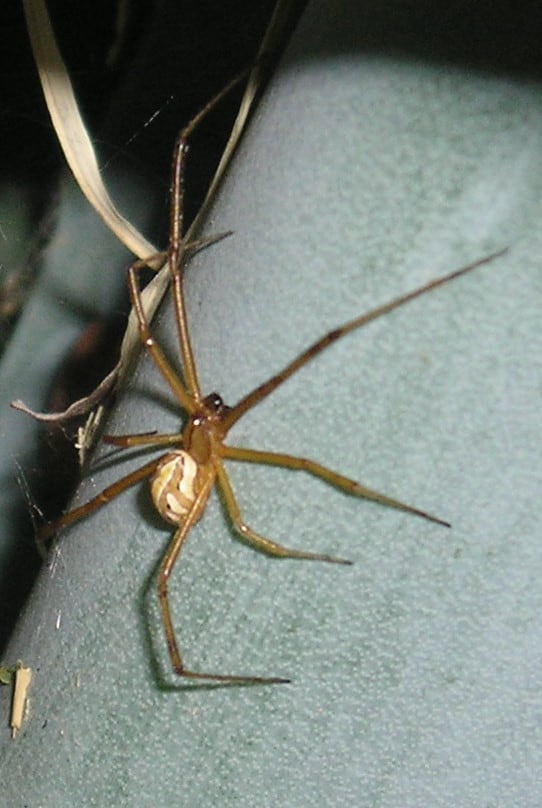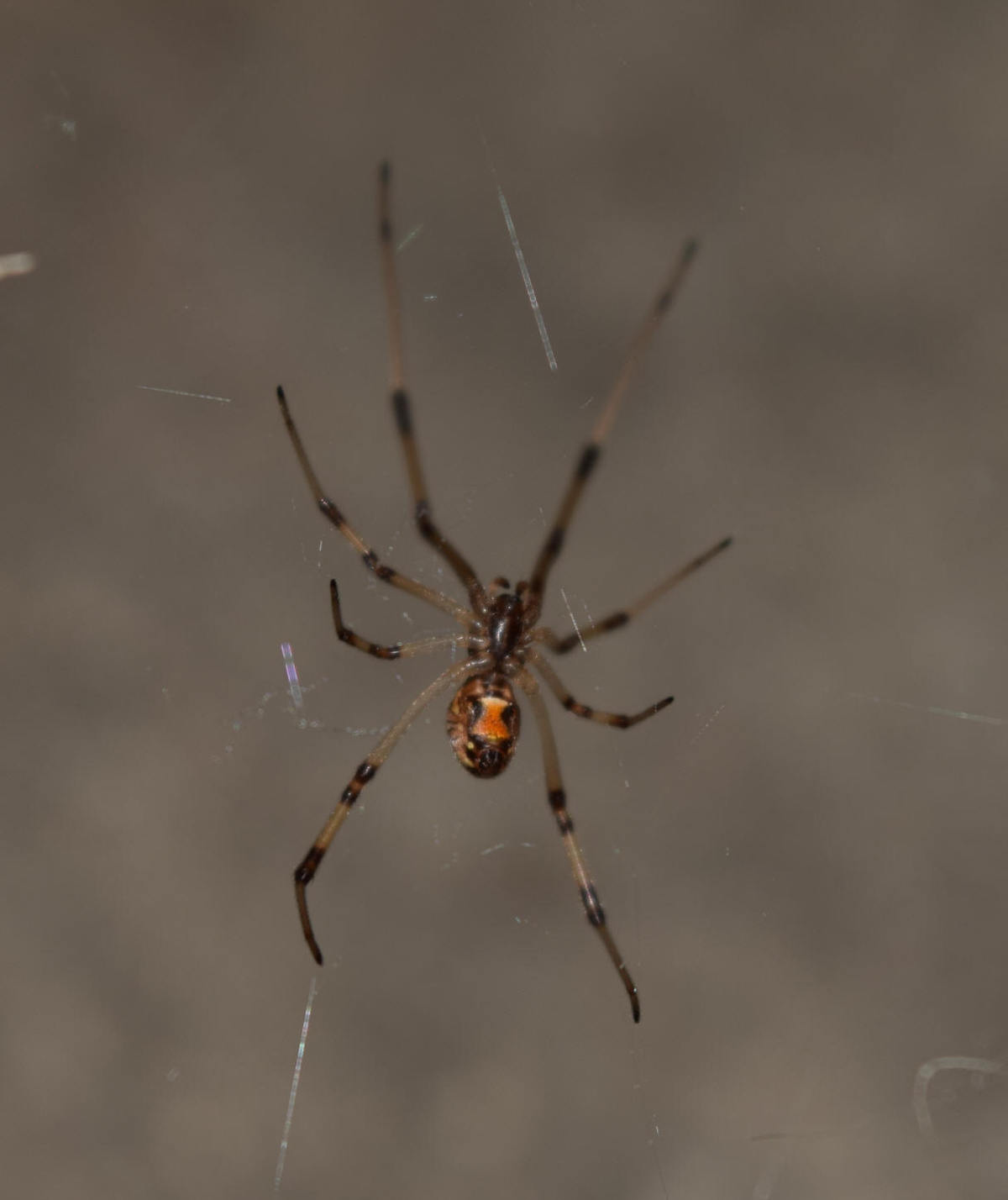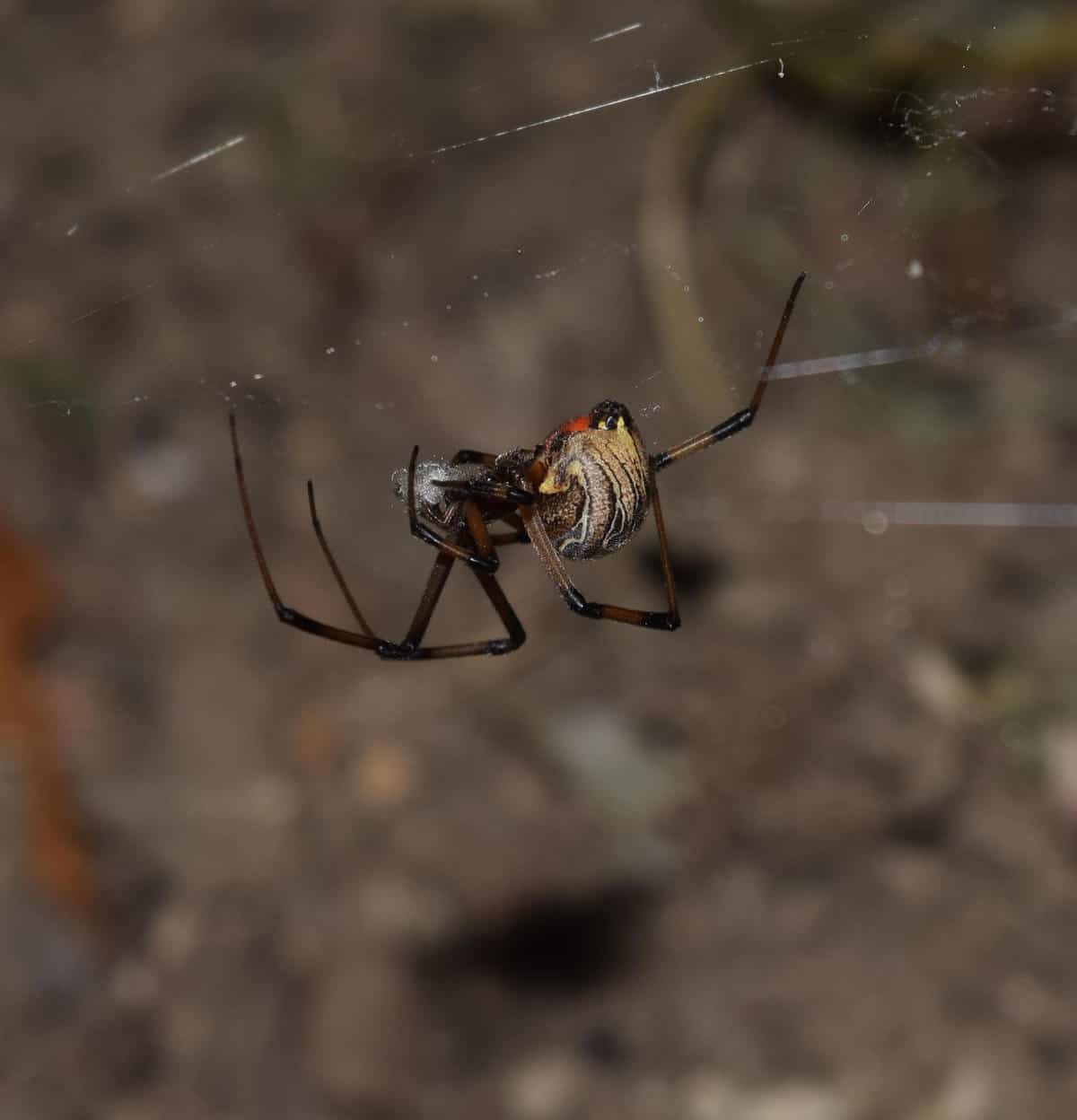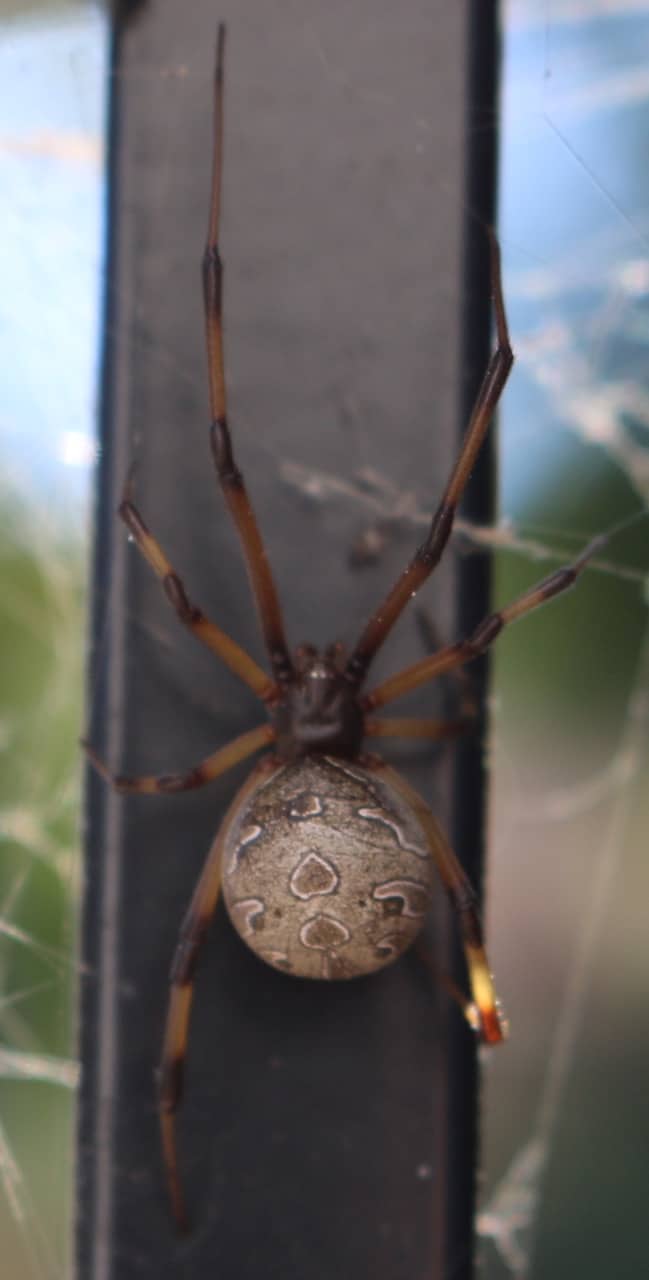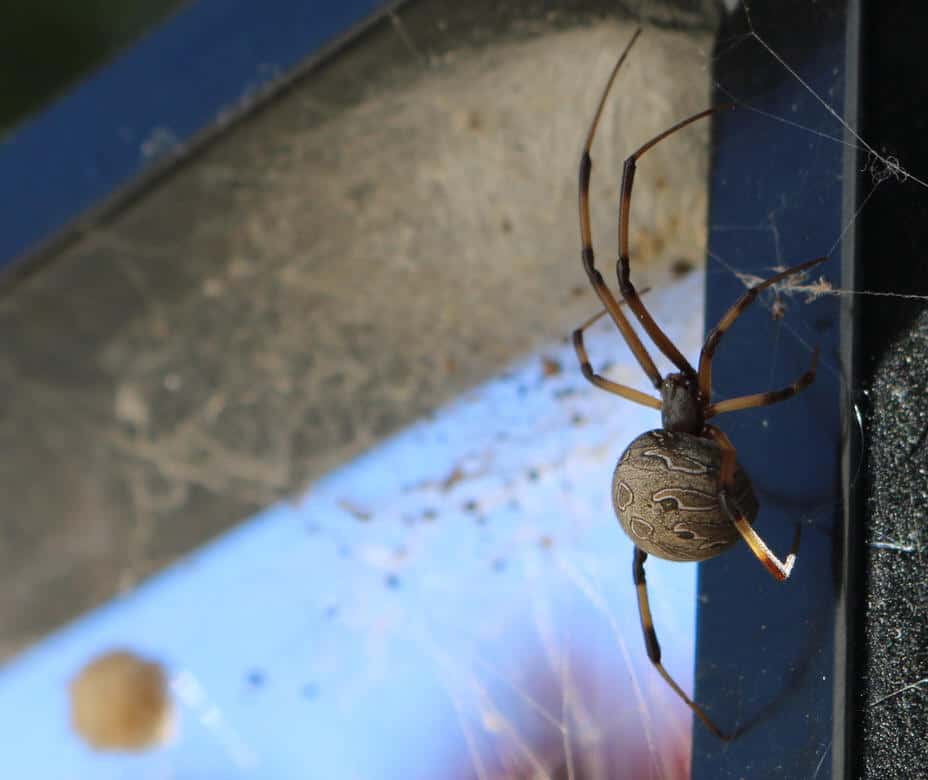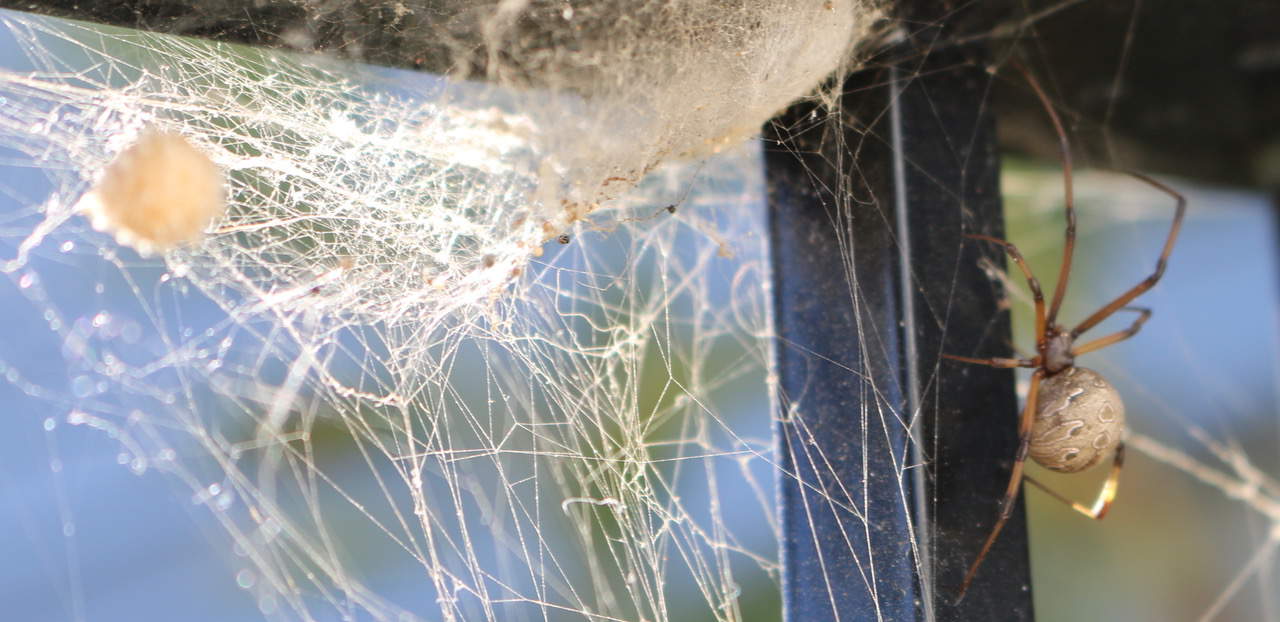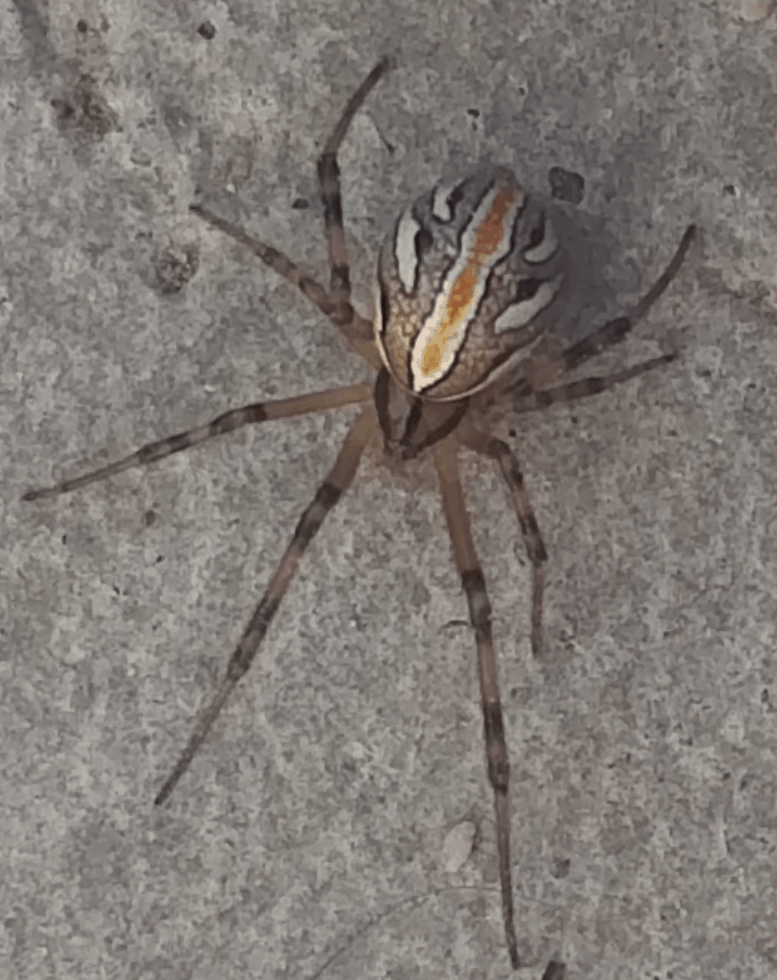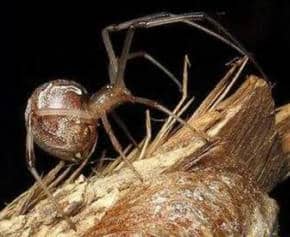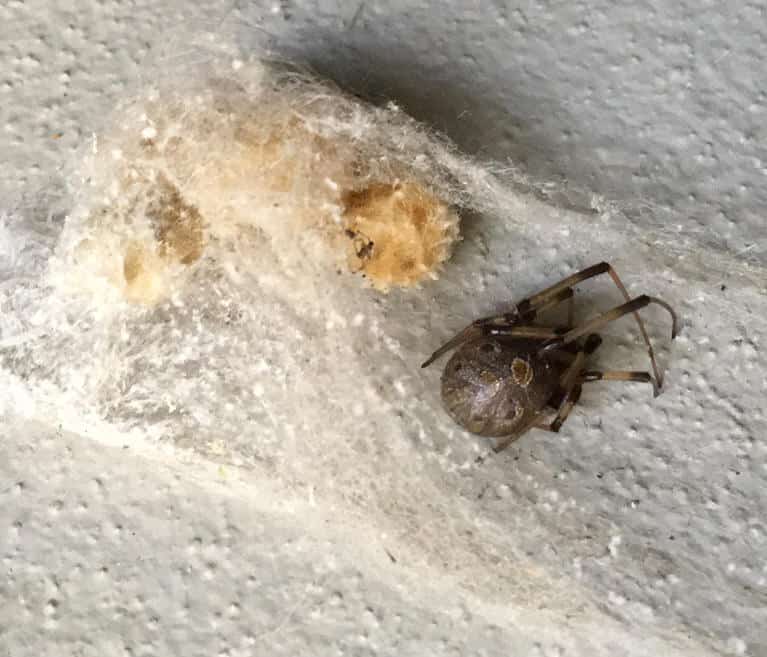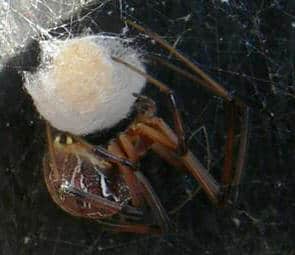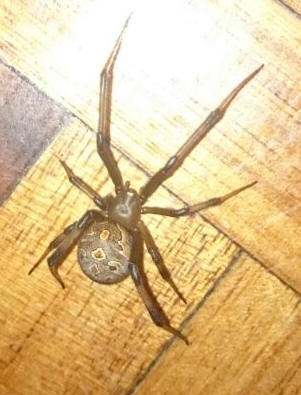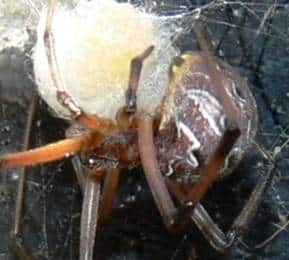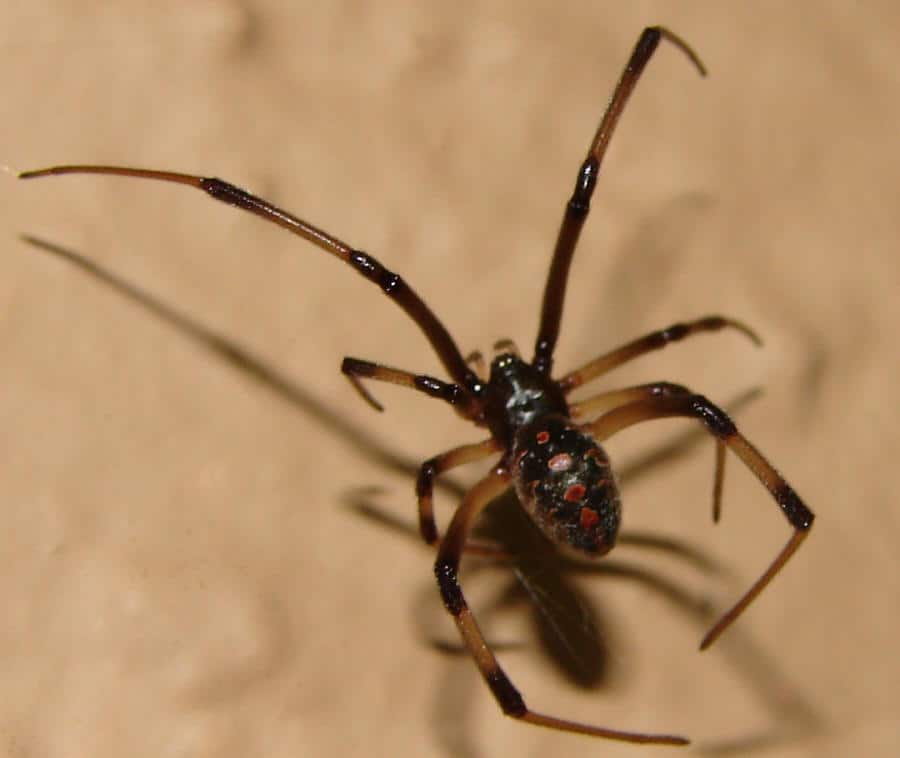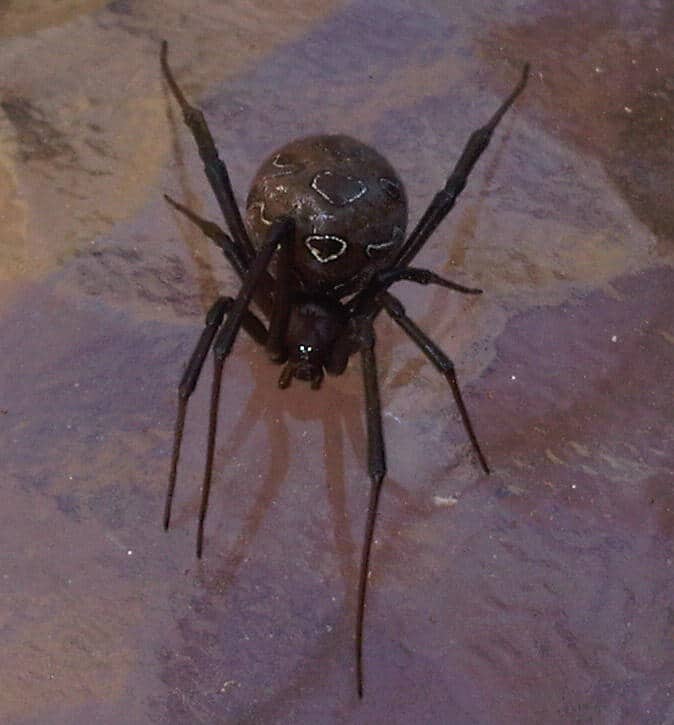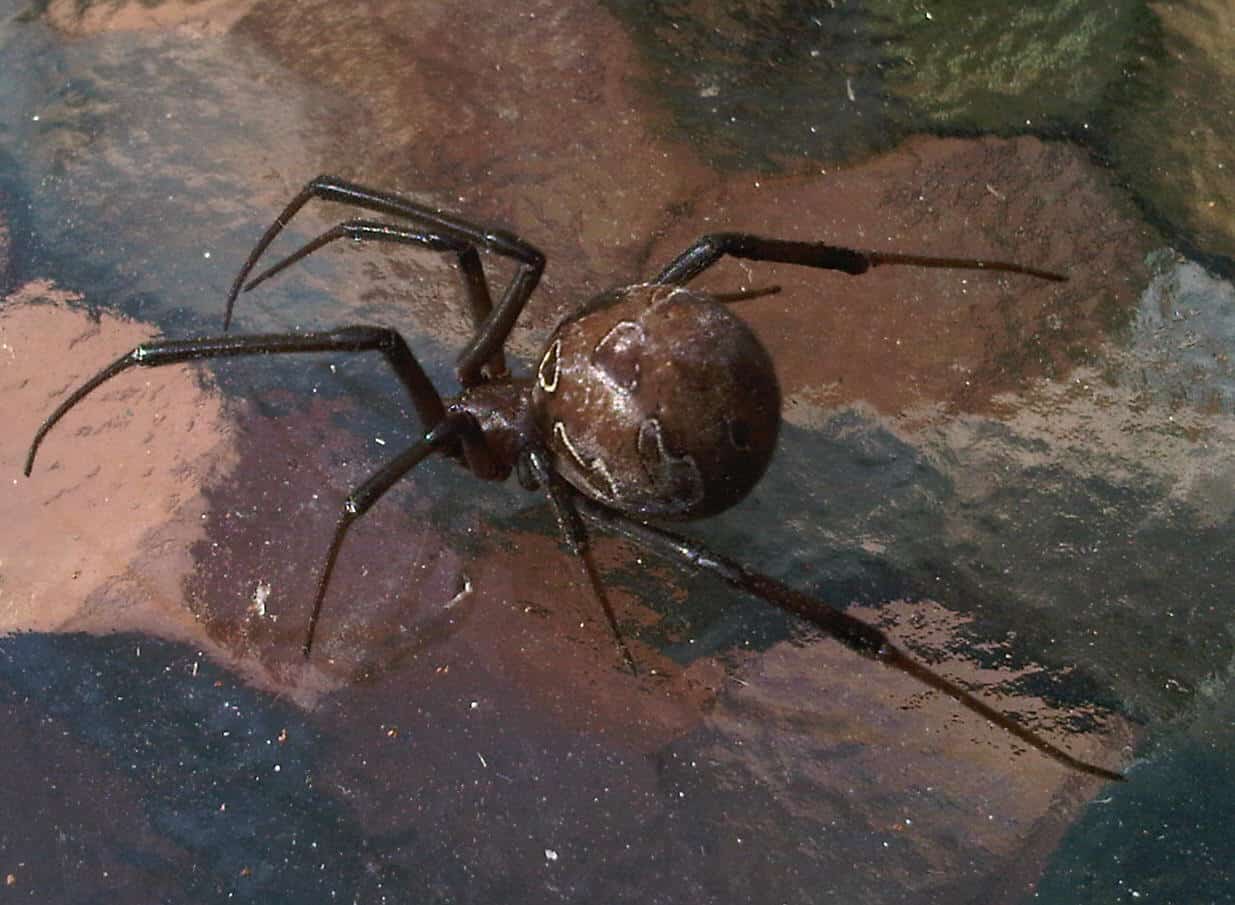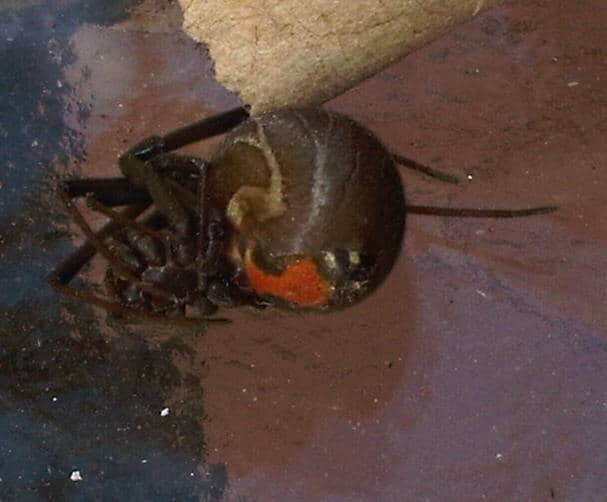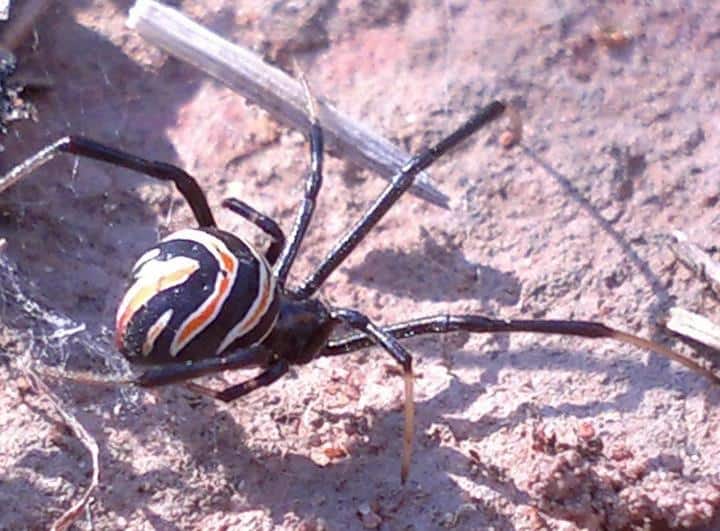Black Widow is a common name of some spiders in the genus Latrodectus which belong to the spider family Theridiidae, or the cobweb weavers. The North American species are (Western) Black widow, Latrodectus hesperus; (Southern) Black widow, Latrodectus mactans; (Northern) Black widow, Latrodectus variolus. Spiders of the genus Steatoda also belong to the spider family Theridiidae and are often confused with the widow spiders. Also known as Combfooted Spiders, this family includes a number of well known arachnids, including the American house spider, Achaearanea tepidariorum, and the redback and widow spiders, Latrodectus spp.. Other Latrodectus sp. are the Brown Widow, Redback (Australia), Katipo (New Zealand) and Button Spider (Africa).
All photos are copyright to their owners and may not be reproduced without permission.
Table of Contents
Black Widow
Black Widow spiders inhabit most of the warmer regions of the world to a latitude of about 45 degrees N. and S. They occur throughout all four deserts of the American Southwest. Related Species Widow spiders (Genus Latrodectus) are the best known and largest of the Cobweb Weavers (Family Therididae). All widows are venomous, though not all can cause injury to humans.
Black Widows comprise about six species and inhabit most of the warmer regions of the world to a latitude of about 45 degrees N. The female black widow spider, though it is the most venomous spider in North America, seldom causes death as it injects a very small amount of poison when it bites. Reports indicate human mortality at well less than 1% from black widow spider bites. Anyone bitten by a black widow spider should seek medical care. Black widow spiders are common around wood piles, and are frequently encountered when homeowners carry firewood into the house.
They are also found under eaves, in boxes, outdoor toilets, meter boxes, and other unbothered places. Black widows have a distinctive round shiny black abdomen with red markings usually under its abdomen. They are a small spider with thin legs and the female’s abdomen becomes larger just before laying her egg sac. Males are considerably smaller and usually not as dangerous as the female due to their size.
A lot of the photos below are males, the ones with the smaller abdomen. Not all have the same red markings on the top of their abdomen and are probably other types of Black Widow spiders like the Northern Black Widow etc but for my purpose to show what they look like in general, I have put them all together.
Brown Widow
The brown widow spider (Latrodectus geometricus) is native to South Africa and was first discovered in the United States in 1935. This spider is also commonly known as the grey widow, brown button and geometric button spider. It is venomous and has a neurotoxin like that of the black widow. While it is true that brown widow spiders are highly venomous to their prey, they are very timid and rarely bite humans; when they do bite, they injects less venom than the black widow, so the widespread fear of a bite from this spider is unwarranted. The brown widow is one of five United States species of the widow family. The Brown Widow varies from light tan to dark brown or almost black. It has markings of black, white, orange and brown on the back of its abdomens. It is easily identified by its typical mine shaped egg sacs. Black widow egg sacs are round and smooth.
Button Spider
In southern Africa, the button spiders (elsewhere in the world known as widow spiders) are the most important group of medical importance. Six species occur there, belonging to the genus Latrodectus of the family Theridiidae. The button spiders can be divided into the black button spider complex (4 species.) and the brown button spider complex (2 species.). The button spiders have round abdomens with slender legs of which the third pair of legs is the shortest. Their colour varies from cream to pitch black between species.
The markings on the abdomen also vary from stripes to spots. In adult females the markings become less distinct. The patterns on the ventral side of the abdomen vary from having none to one with a distinct red hourglass pattern. Males are much smaller than females and the markings on their abdomen consist of red or white bands. The female button spider constructs her web, which contains a funnel-shape retreat on one side, usually close to the ground in bushes or under debris. The egg sacs are creamy-white and vary in shape from round and smooth to fluffy or spiky. The female frequently kills the male after mating, hence the common name “widow spiders”.
The female produces more than one egg sac per season usually during the summer months. The egg sacs are attached with silk to the side of the web. The spiderlings hatch after a week or more and one egg sac can contains more than 100 spiders. They disperse by wind and construct their own webs. They undergo between 7-9 moults before reaching adulthood and can live between 12-18 months. They feed on a variety of insects such as beetles and termites.
Brown Button Spider
The brown button spider complex contains two species and they are regarded as less venomous: L. geometricus and L. rhodesiensis. They are very similar in appearance to the black buttons but their colour varies from cream, grey and brown to pitch black. The ventral surface of the abdomen in both species has a prominent red to orange hourglass marking, while the dorsal surface is covered with an intricate geometrical pattern in the paler specimens. A potential source of confusion with respect to the identification of these two species is that the most venomous species in Europe and America have the same red hourglass pattern as the two less venomous species found here.
Latrodectus geometricus is an introduced species and very common in Southern Africa and is usually found in built-up areas, especially around houses and outbuildings. They construct a funnel-shape retreat in dark corners with silk threads radiating outwards. The egg sac is characteristic in having a spiky appearance. (Info: Ansie Dippenaar-Schoeman)
Black Button Spider
The black button spider complex contains the following four species: Latrodectus cinctus, L. indistinctus, L. karooensis and L. renivulvatus and they are regarded as the more venomous group. Although no documented records exist of fatality due to black button spider bites, they have the potential to cause severe symptoms with small children and elderly people being at greatest risk. The black button spiders are black with red patterns on top of the body. The markings vary between species from stripes to spots. In adult females the markings become less distinct. There are no markings on the ventral side of the abdomen in adults. The egg sacs in all four species are creamy-white, round and smooth.

